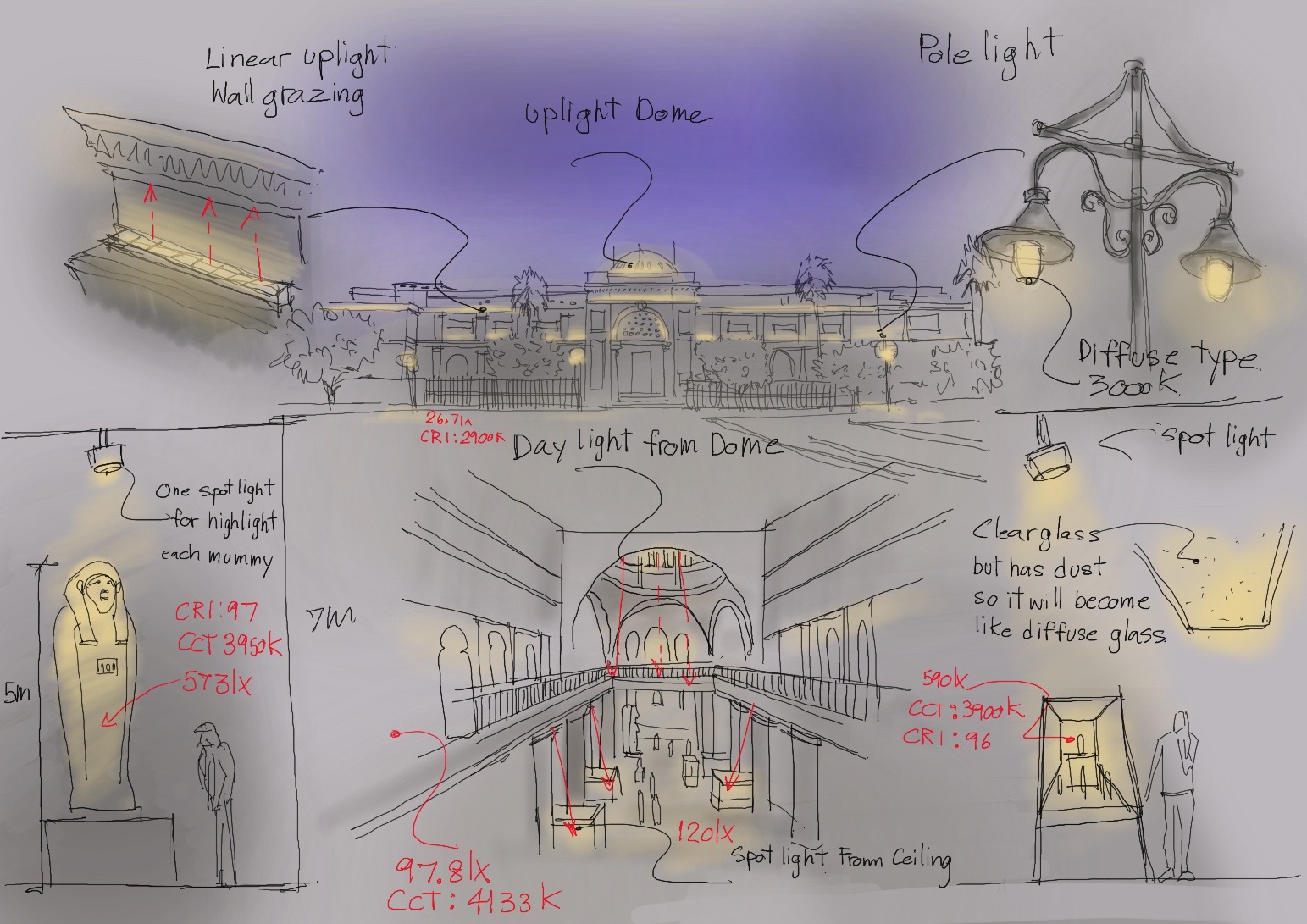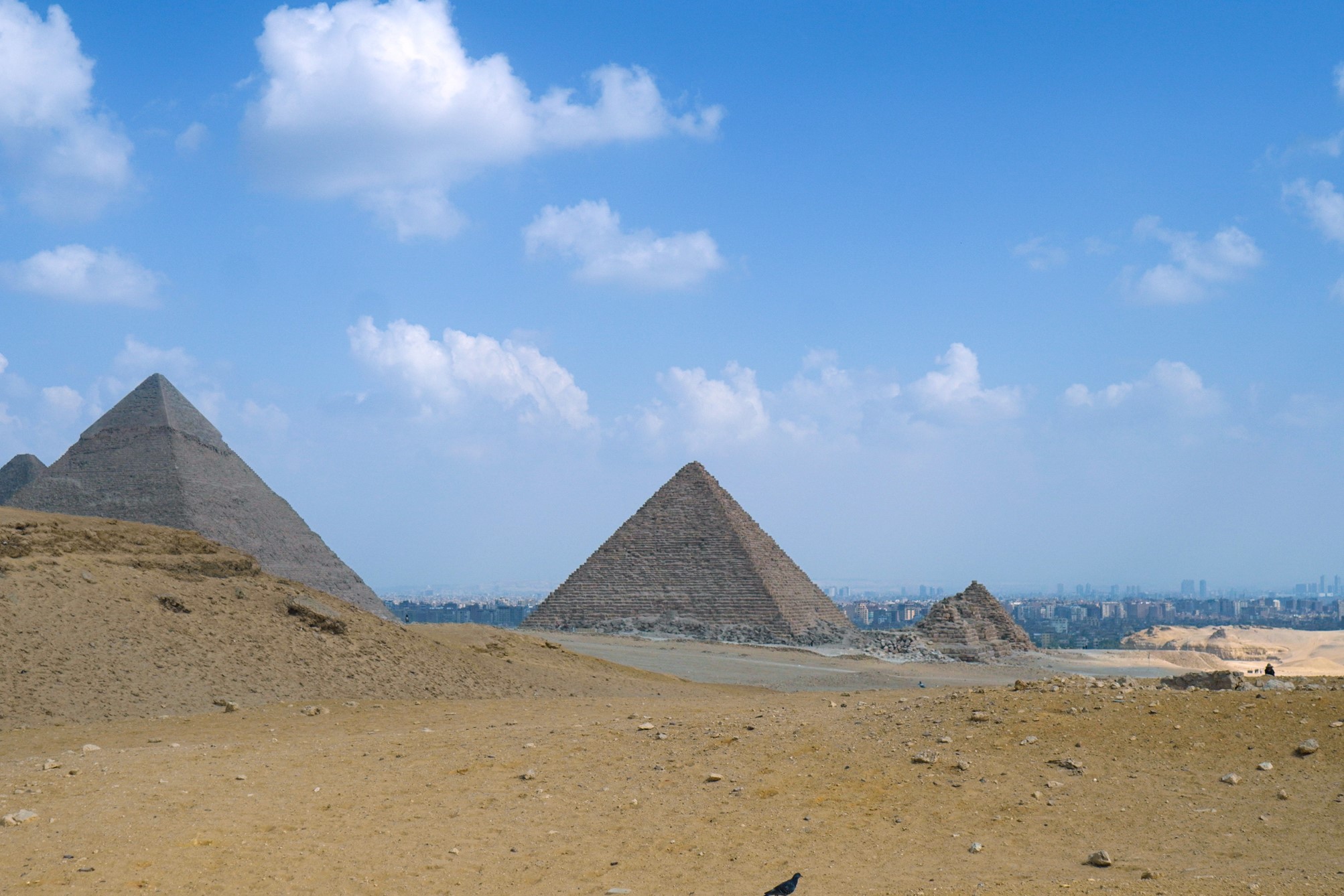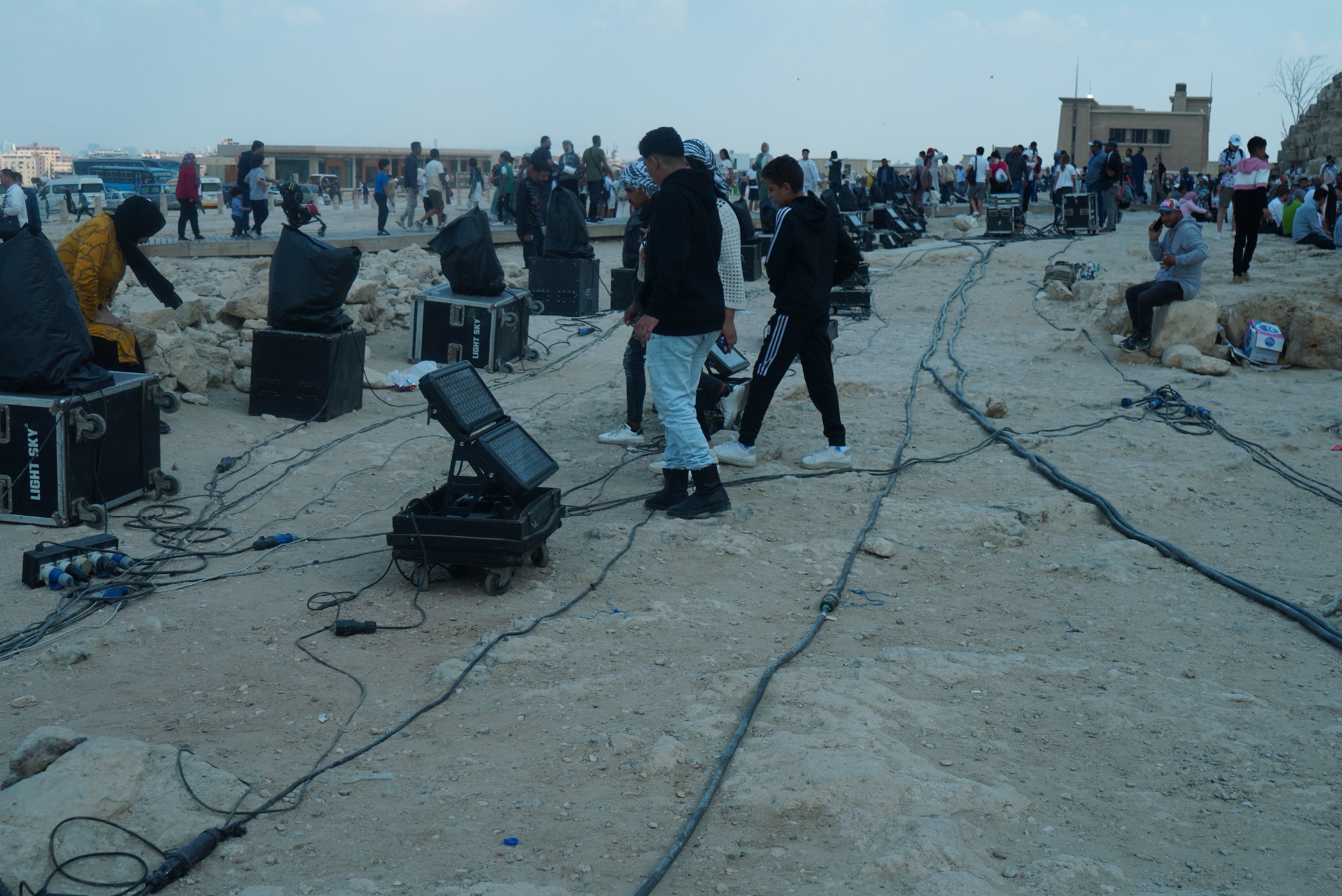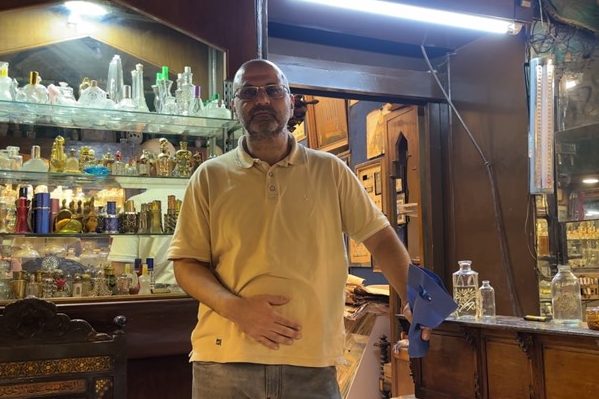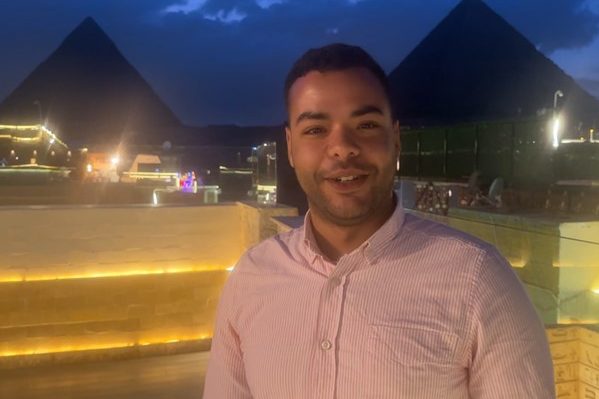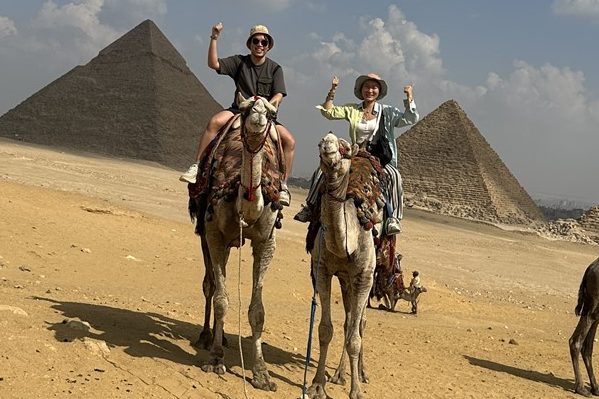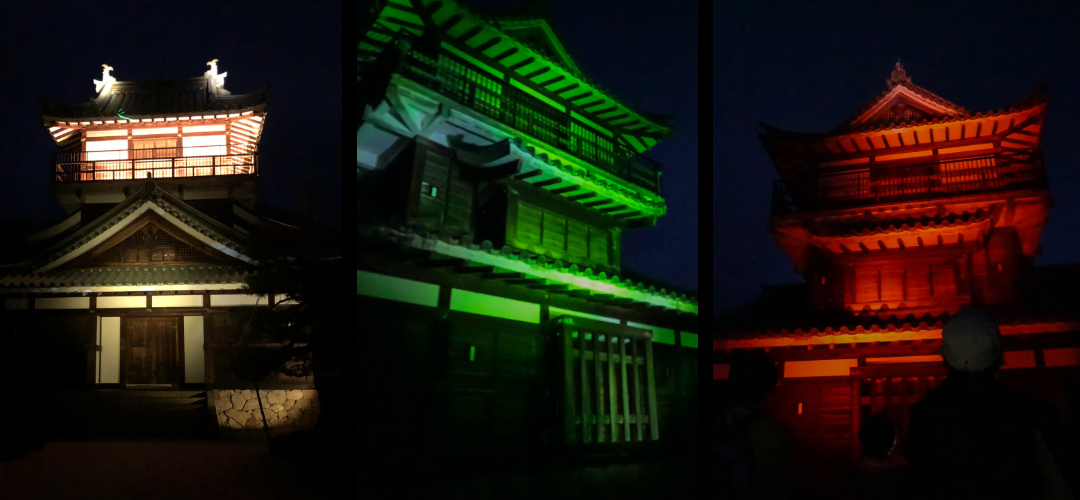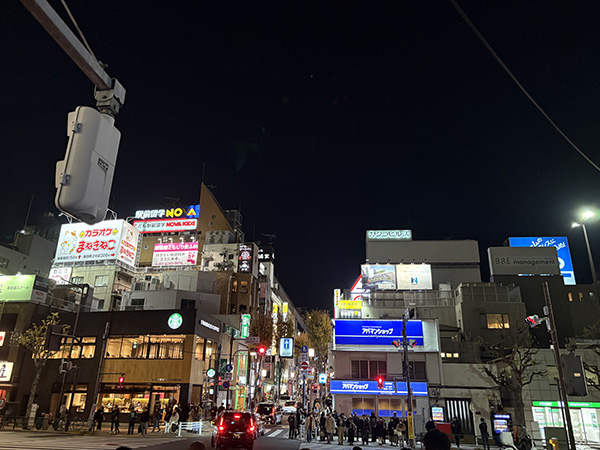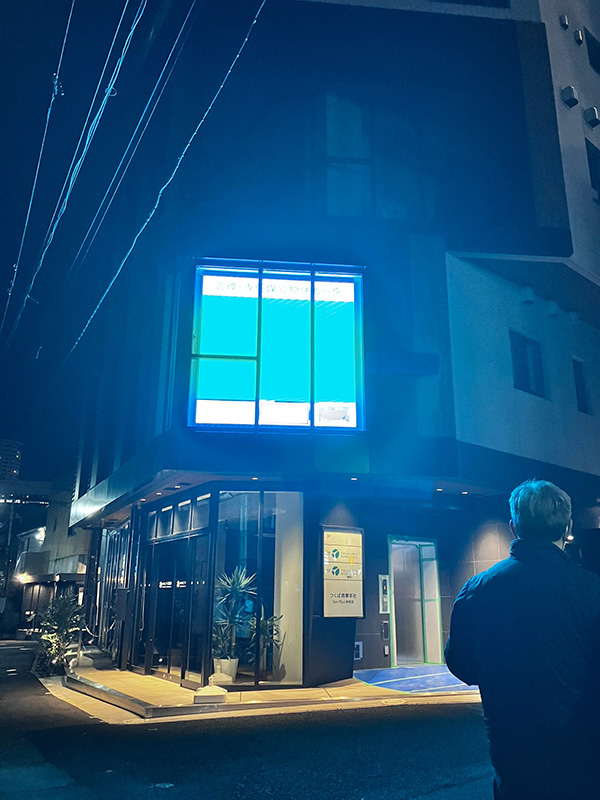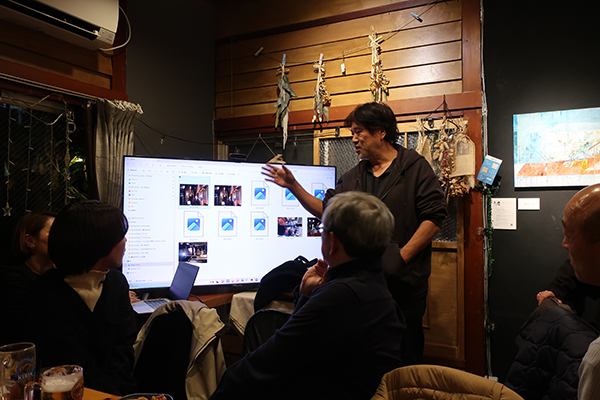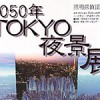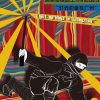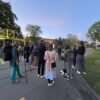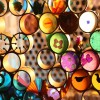Date of Issue: 16 December, 2024
・-Activity 1/ City Night Survey –Cairo&Giza, Ezypt(2024.10.31-11.3)
・-Activity 2/ Visiting Tanteidan in Hida Kamiokamachi (2024.11.15)
・-Activity 3/ Nightwalk : Kagurazaka, Tokyo (2024.11.18)
City Night Survey: Cairo&Giza, Egypt
2024.10.31-11.3 Makalin Wongchinchai + Stell Li
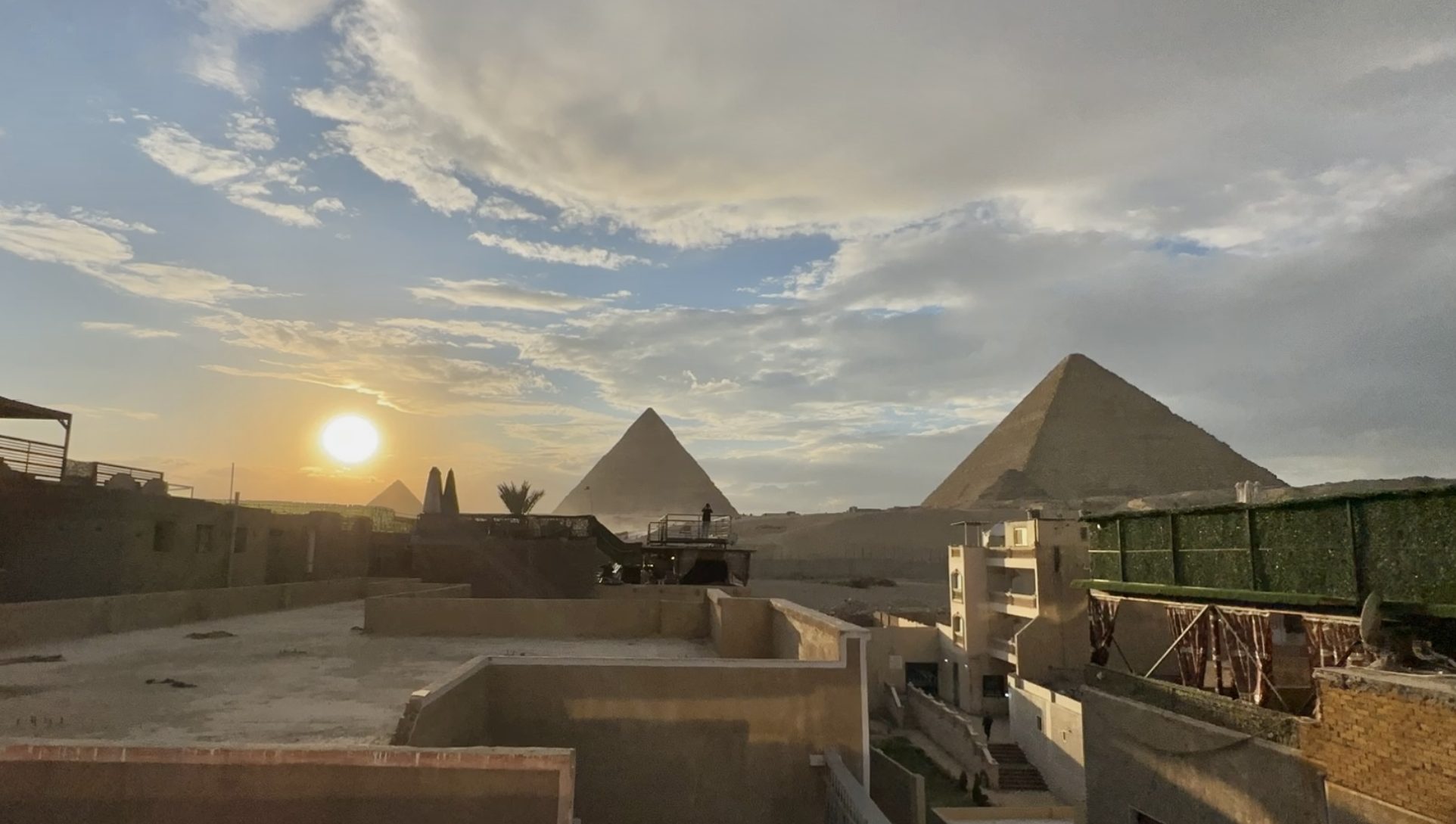
Egypt, land of secrets, a place full of history, mystery and amazing stories. We wanted to see not only the
famous pyramids, but also a lot of interesting cities and lightings in the night. To explore the lighting in Egyptian daily life, we chose to visit two main cities in Greater Cairo Area for four days.
■Introduction
Egypt, one of the world’s oldest civilizations, is home to the pyramids, deserts, the Nile, and its vibrant capital, Cairo, where ancient and modern worlds meet.
To explore this one of the most historical countries in the world, we chose to visit two main cities in Greater Cairo Area —Cairo (the captial city of Egypt) and Giza (with Memphis and its Necropolis – the Pyramid Fields from Giza to Dahshur ).
As the sun sets over the city, Cairo & Giza transforms into a dazzling display of lights and enchantment. The bustling streets come alive with vibrant energy. As locals and visitors alike gather in cafes, shisha lounges, and bazaars, embracing the rich Egyptian culture that thrives well into the night, we surveyed lightings on Cairo & Giza’s daily life.
■Cairo
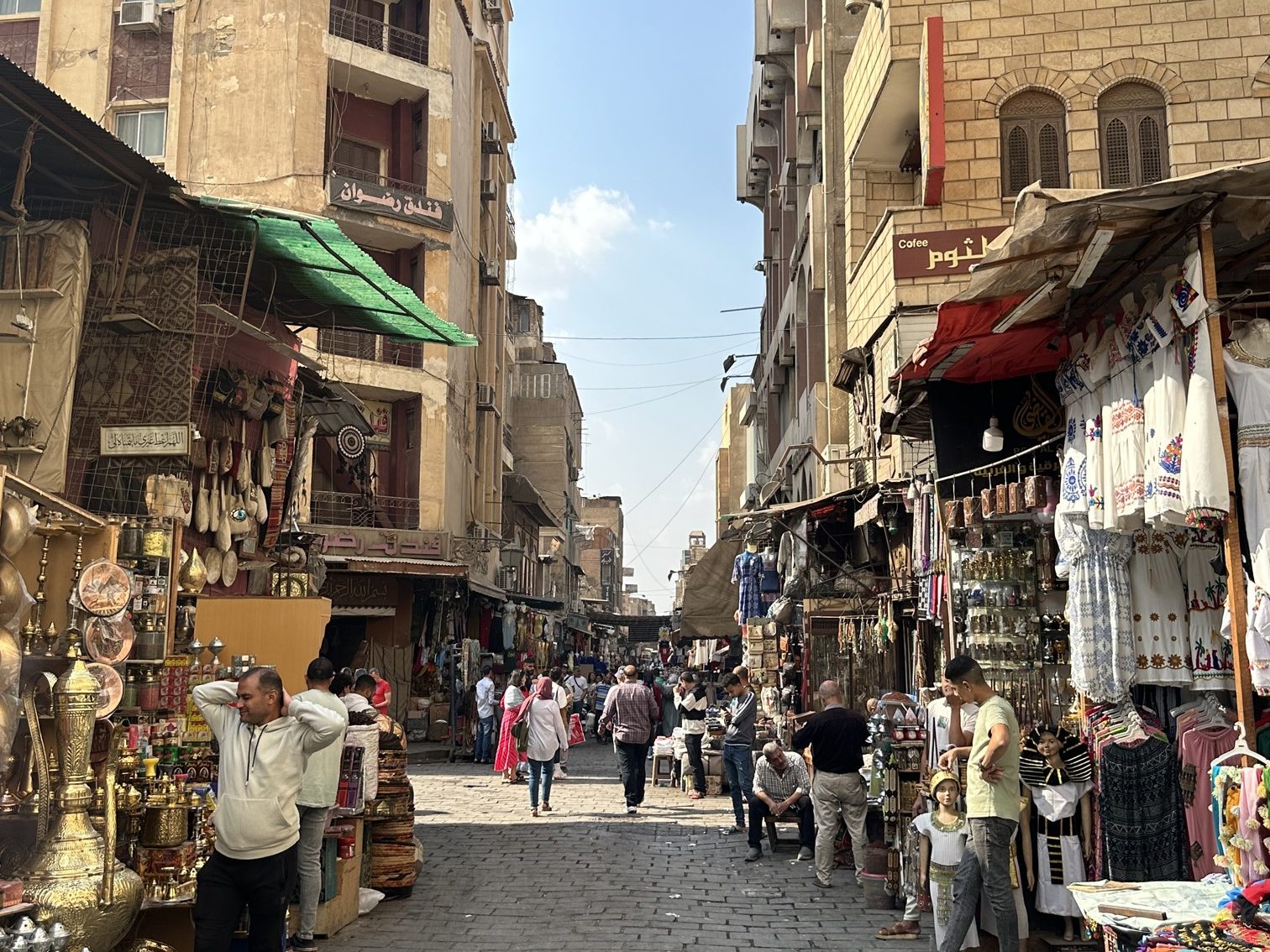
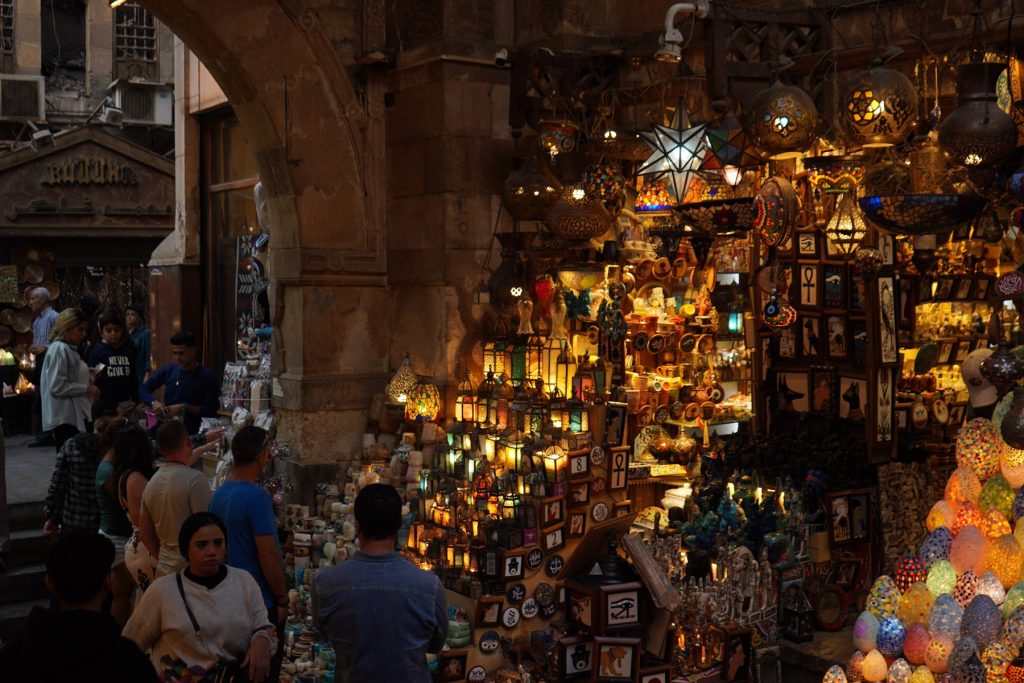
The Khan el-Khalili market has always been a hub of trade and commerce since it was established in 14th century. Walking in this maze-like narrow streets was like taking a journey back in time.
During the day, the sunlight was intense. When the sun shines through all kinds of awnings, the streets were covered with rich colors.
However, it is when the night falls that the light magic happens. When every entrance arch gate was illuminated by warm glows, the streets were still dark, yet the shops came alive with uiquely styled lighting. For instance, Islamic lanterns hanged over the narrow paths, while stores selling distinctive lighting fixtures showcased colorful alabaster lamps.
Some shops simply had cool-toned LED strips draped over their canopies, casting a white light on their goods. At that moment, the ancient market transformed into a dazzling spectacle of shimmering light.
■Greenlight on AI-Hussein mosque
While walking in the bustling and lively market at night, what aroused our curiosity the most was a nearby spire. Its pencil-like shape, illuminated by warm light, accentuated its sharp ascent. Uniquely contrasting with the warm yellow tones on it was a vibrant green light. It was so striking that we could see it clearly from a distance.
Driven by the curiosity, we asked the locals about it, only to learn that green stood for good, harmony, peace, and vegetation. Green sustained life and promised protection and happiness. As a result; green was linked to Osiris. They like green.
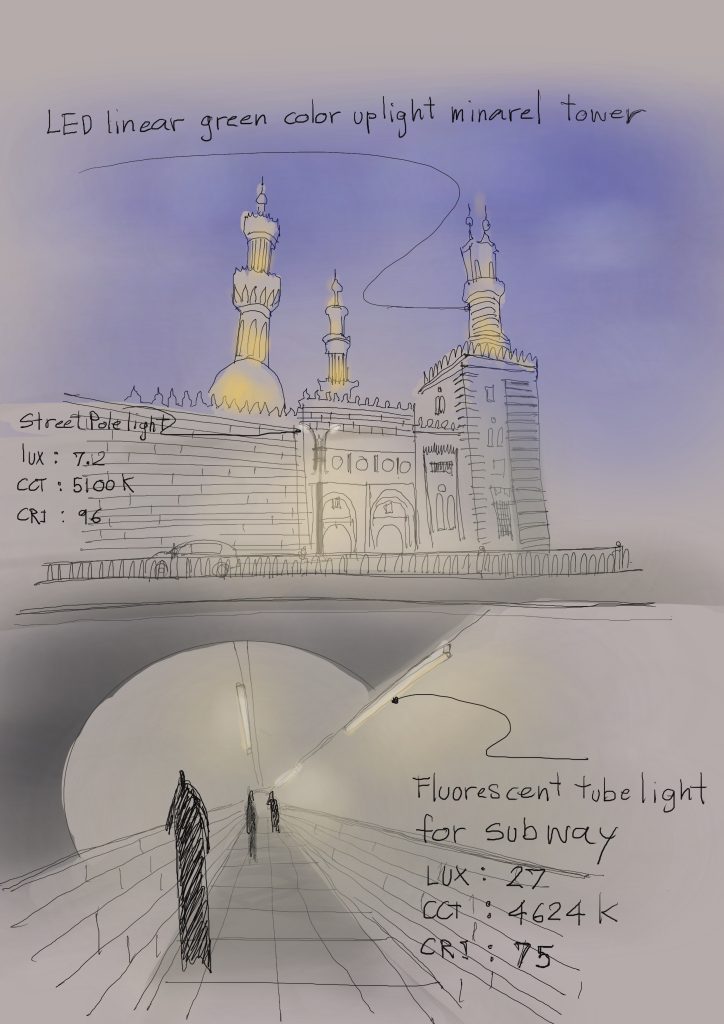
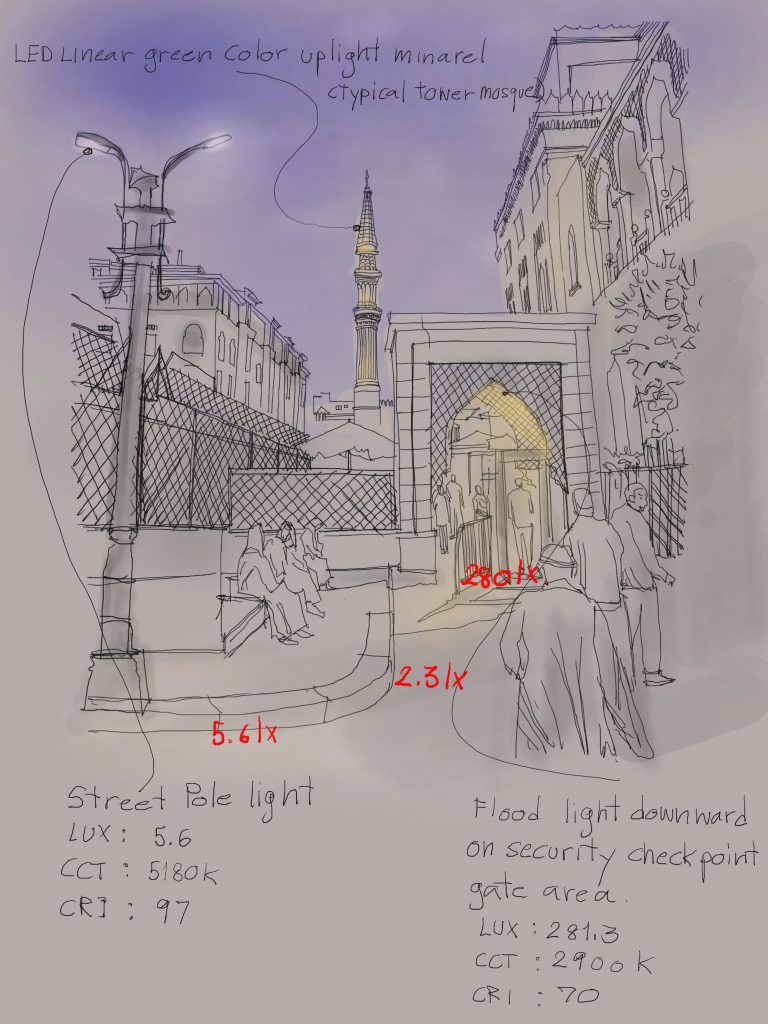
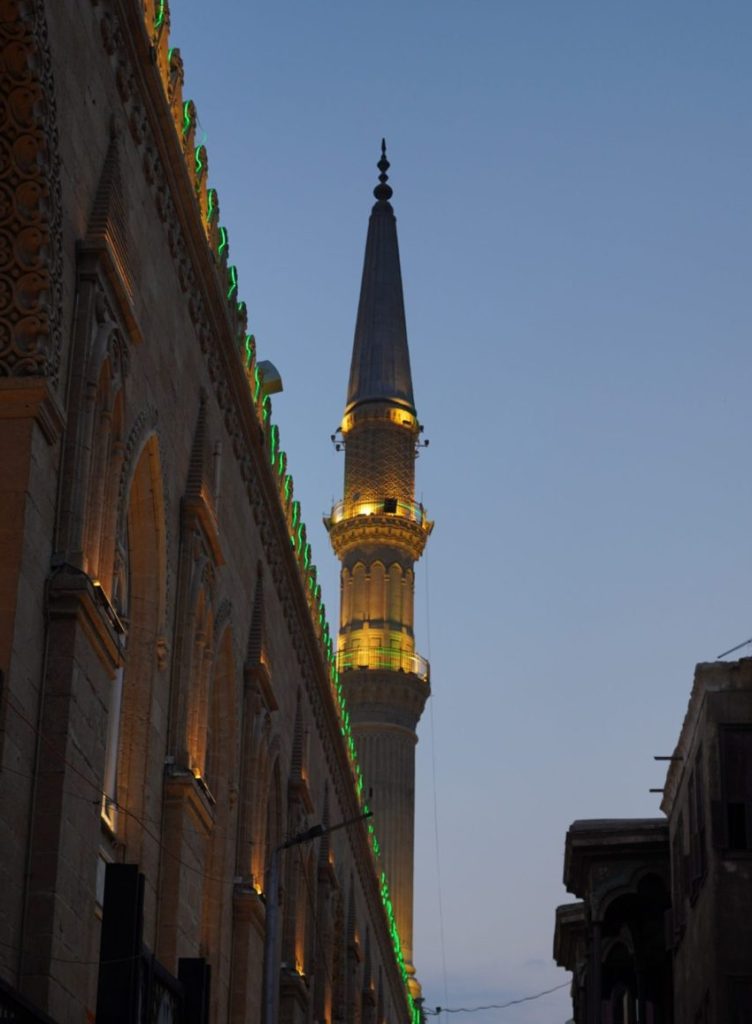
■Tunnel
lit by just a few simple LED fixtures. Perhaps there weren’t enough lights, or maybe they lacked sufficient power. The entire passage felt dark and desolate, with only the entrances illuminated by strong sunlight.
Walking through the streets of Cairo, my first impression was of the brick-yellow buildings stretching to the skyline. The minarets which could be seen everywhere, were also in a sandy hue. Sheep grazed on the rooftops, while the markets thrived below. A large area of unfinished brick buildings might just face a city
park — a lively and happy greenery place in the desert. The buildings were mostly in square shape, with small window. In the night, there was nothing to light up the residential buildings, only the warm lights would stream through those small windows and form random lighting textures on the wall.
■Night view along Nile River
One of the best views to see Nile river in the night must be Qasr El Nil bridge. It is an icon of Nile River and connects the main business and economic of both sides. Standing on the bridge, we can see the colorful lighting of the cruises floating above the river. Most of the tall buildings on both sides of the river were hotels.
The facade lightings were simple and efficient, using uplight for the architectural features and a bright front-lit light for the hotel’s name.
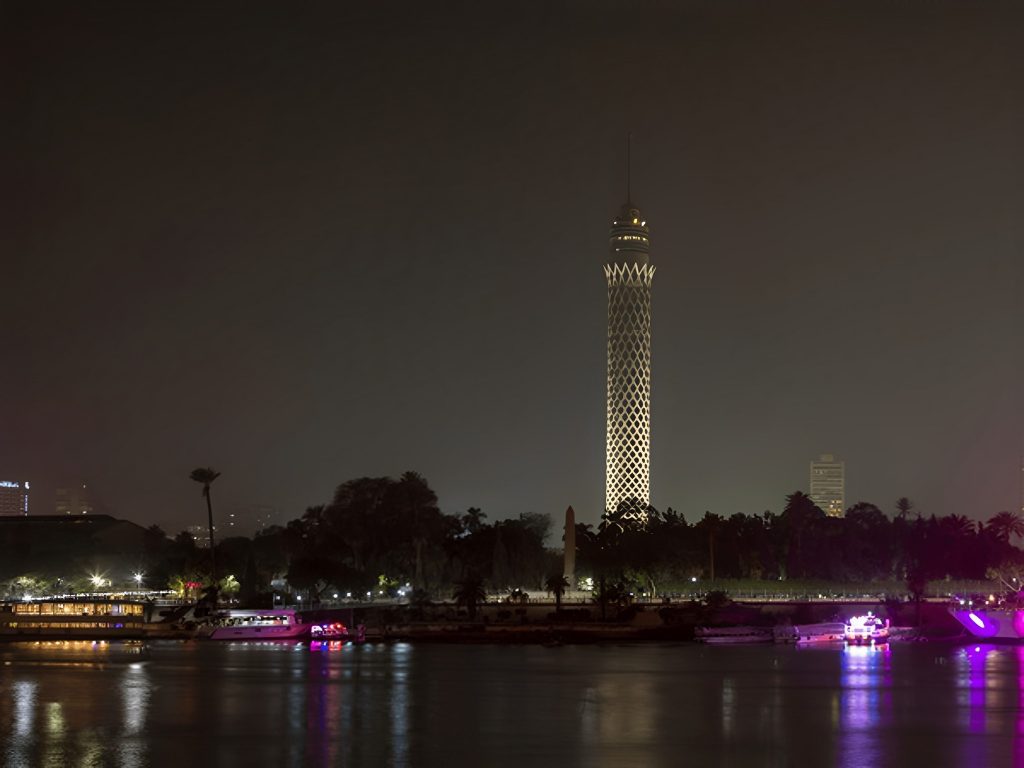
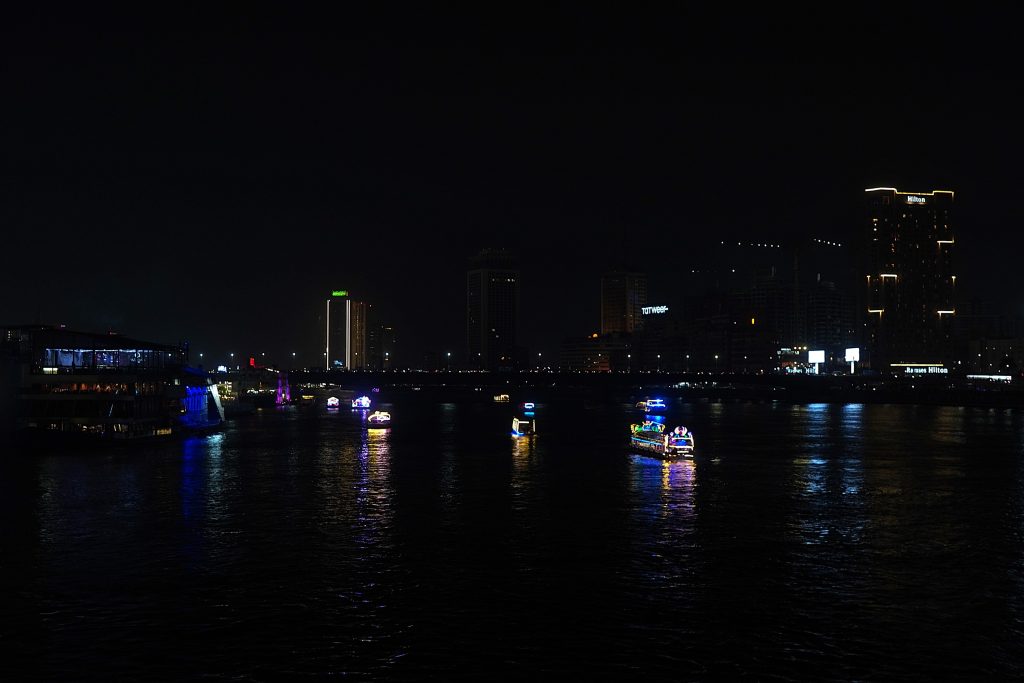
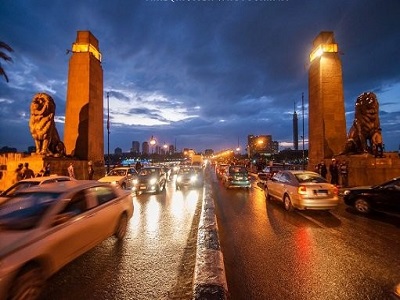
However, this iconic bridge didn’t appear to be a tourist spot. The uplights for the sculptures were broken. Poles on the bridge seemed quite old and some were not working. It was dark and full of people walking there, which made it diffcult to see others.
When we wandered along the river bank, we passed a quiet and cozying park, Al Andalus Park. At first, we thought it was a private place of the hotel nearby, because of the elegant lighting in the park, like the exquisite lanterns, efficient tree uplight, harmoney light colors.
To our surprise, it is a city park opening to the public, but no one was there.
We walked through many public areas where people were sitting and relaxing in the night.
We noticed that they prefered a darker place rather than near the lights. They would sit and chat on the bench away from the street lights. They were enjoying the dark night.
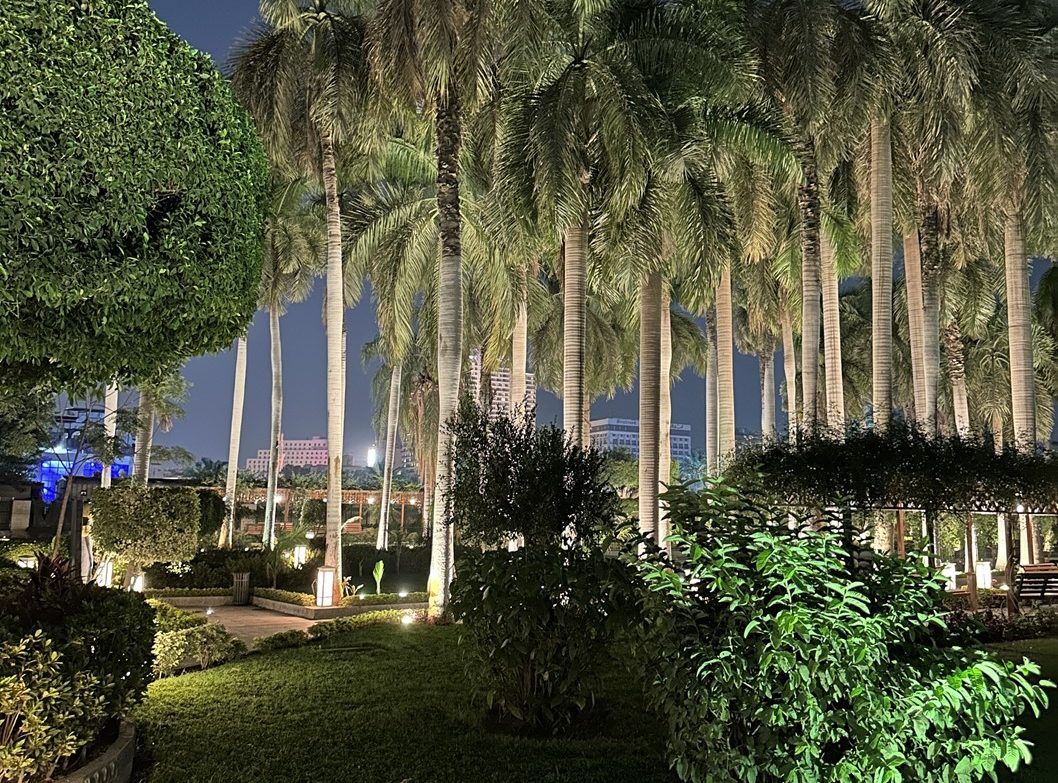
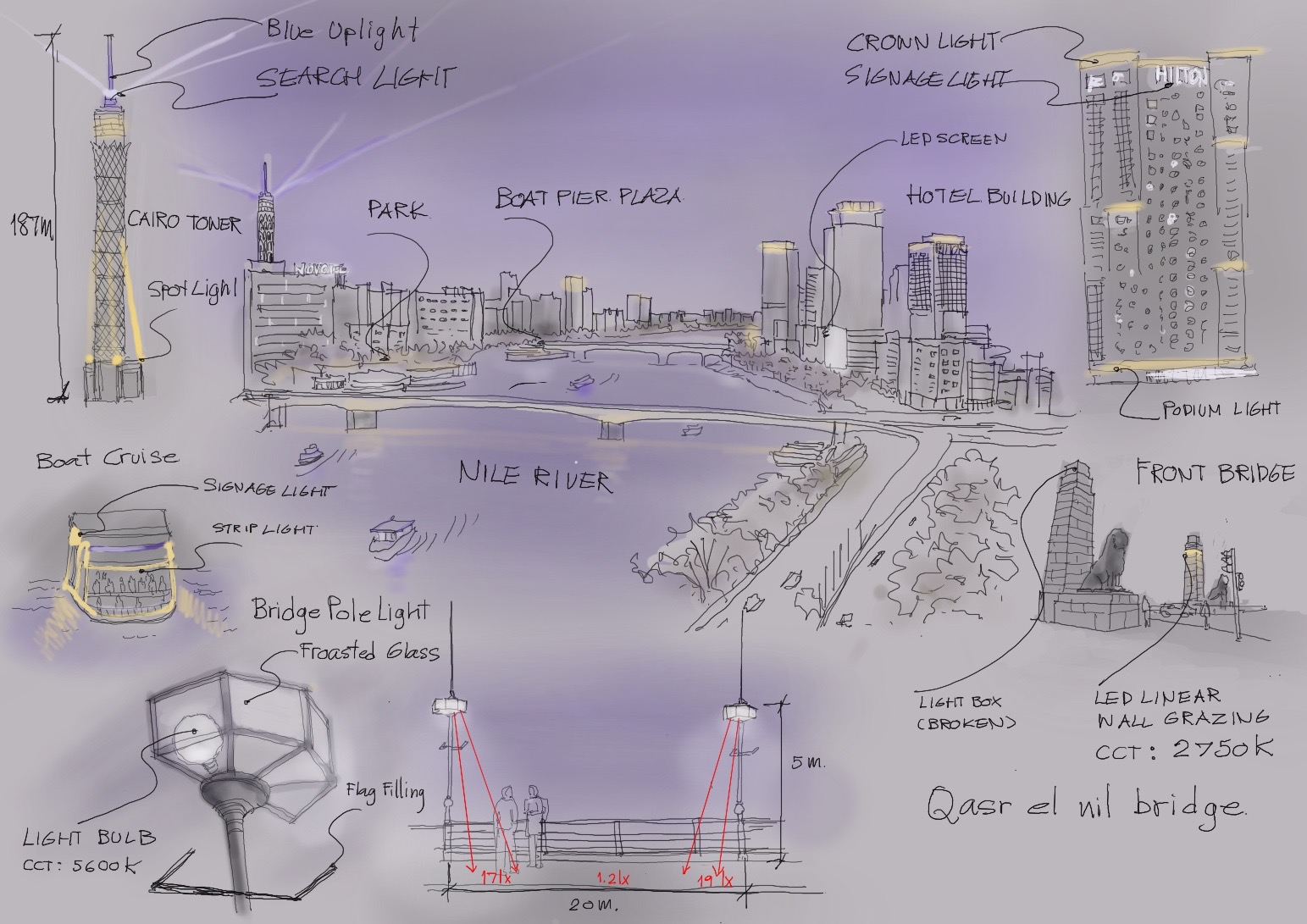
■The Egyptian Museum
The Egyptian Museum in Cairo, designed by French architect Marcel Dourgnon, is the Middle East’s oldest archaeological museum.
Its neoclassical limestone design features a grand facade, symmetrical layout, and spacious atrium, evoking ancient temple grandeur. The two main wings house collections spanning Egyptian history, with high ceilings and spacious halls enhancing the display of its artifacts.
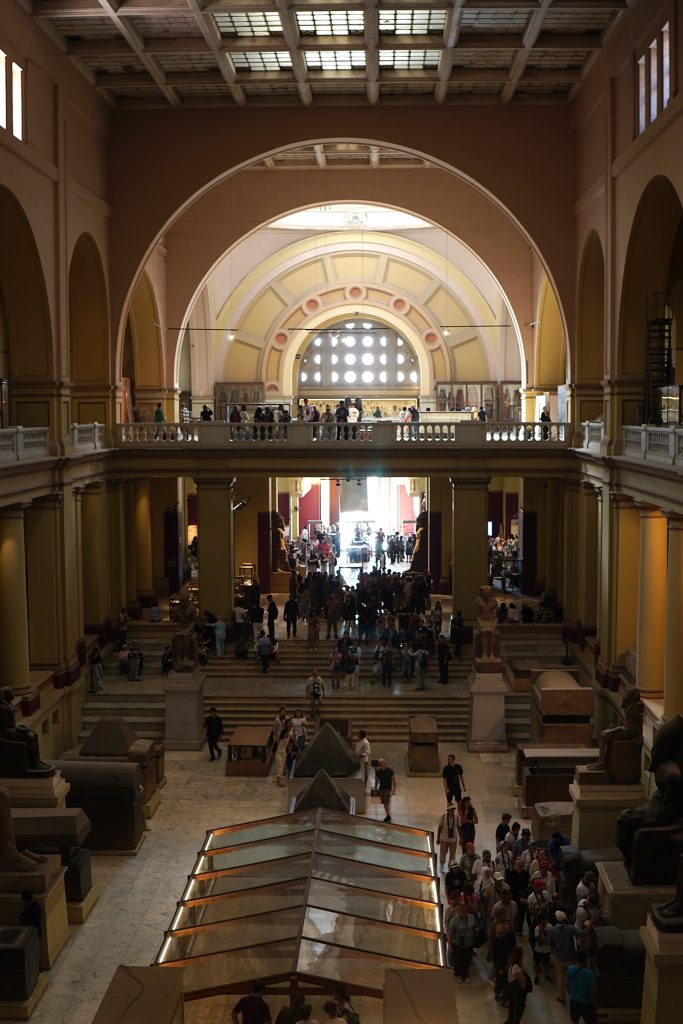
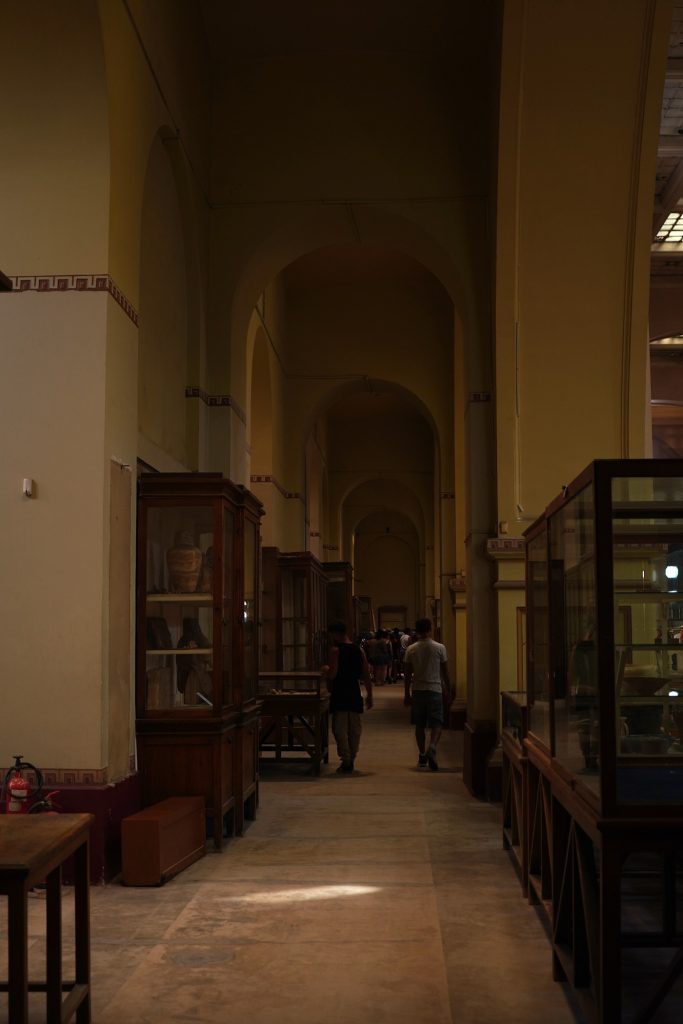
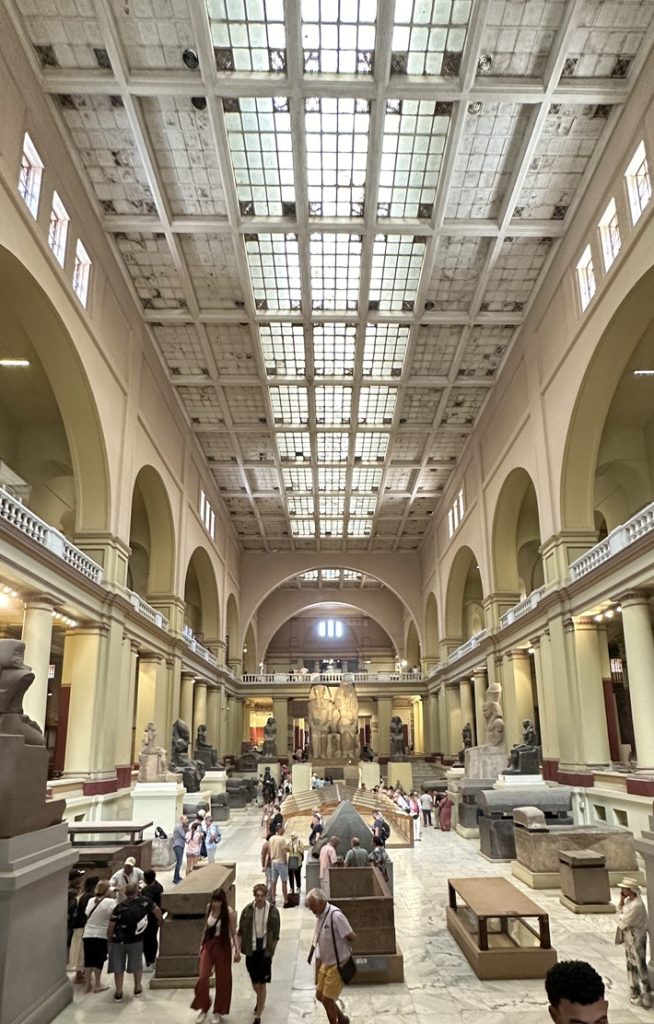
The lighting within the Egyptian Museum plays a crucial role in showcasing the artifacts while preser ving their integr it y. Natural light floods the central atrium through large windows, creating a welcoming and vibrant atmosphere. The carefully balanced artificial lighting complements the natural light, allowing for optimal viewing conditions without causing damage to the delicate ar tifacts.
However the overall lighting was quite dark. It was good to make use of the sunlight as much as possible, but it might be hard to keep the glass clean in the sandy air.
During the night walk, we were impressed by its facade lighting. The historic building transformed into a breathtaking spectacle thanks to the facade lighting.
T he facade of the Egyptian Museum is characterized by its neoclassical elements, incuding grand column sandintricate stone carvings. Speical attention is given to these architectural details through strategic illumination. Soft, warm LED lights are used to wash the facade in a gentle glow, acentuating the texture of the stone and the elegance of the builds structure without overpowering its historical intricacies.
The museum not only stands as a monument to the past during the day but also transforms into a stunning visual landmark at night.
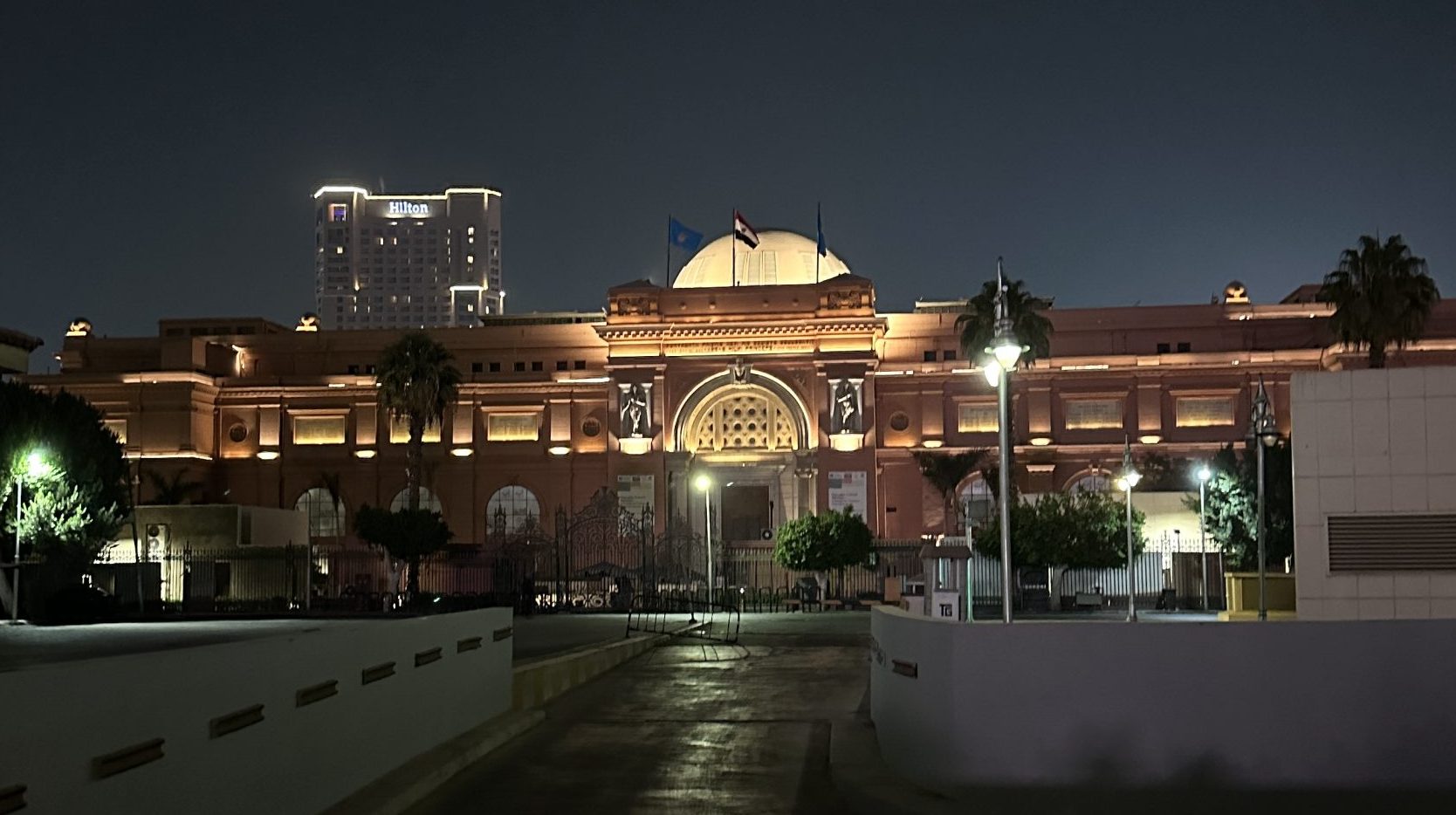
■Giza Pyramids
The Giza Pyramids, located on the outskirts of Cairo, are some of the most iconic and enduring symbols of ancient civilization. Constructed during the Fourth Dynasty of the Old Kingdom, around 2580 to 2560 BCE, the most famous of these structures is the Great Pyramid of Giza, built for Pharaoh Khufu. It is one of the Seven Wonders of the Ancient World and the only one to remain largely intact.
The pyramids served as monumental tombs, encapsulating the ancient Egyptians’ beliefs in the afterlife. They were meticulously designed to protect the pharaoh’s body and possessions from tomb robbers and the elements. Over the centuries, the Giza complex also includes the Pyramid of Khafre and of Menkaure, along with the Great Sphinx, which further illustrates the grandeur of this ancient site.
■Pharaoh’s tomb
The Pharaoh’s tomb within the Giza Pyramid complex, particularly the Great Pyramid of Khufu, is a emarkable testament to ancient Egyptian civilization. Visitors can explore a series of chambers and passageways, leading to the King’s Chamber, where Khufu’s sarcophagus once lay. The intricate design features massive granite stones and walls adorned with hieroglyphics that reflect the Pharaoh’s divine status and his journey to the afterlife.
As you step into the tunnel, only a few lanterns made of alabaster illuminate parts of the path.
The tunnel is narrow, with some sections requiring two people to turn sideways to pass each other. Climbing up and down through the dimly lit passageways, surrounded by the warm glow of the soft yellow lights, one cannot help but immerse oneself in the echoes of a past civilization.
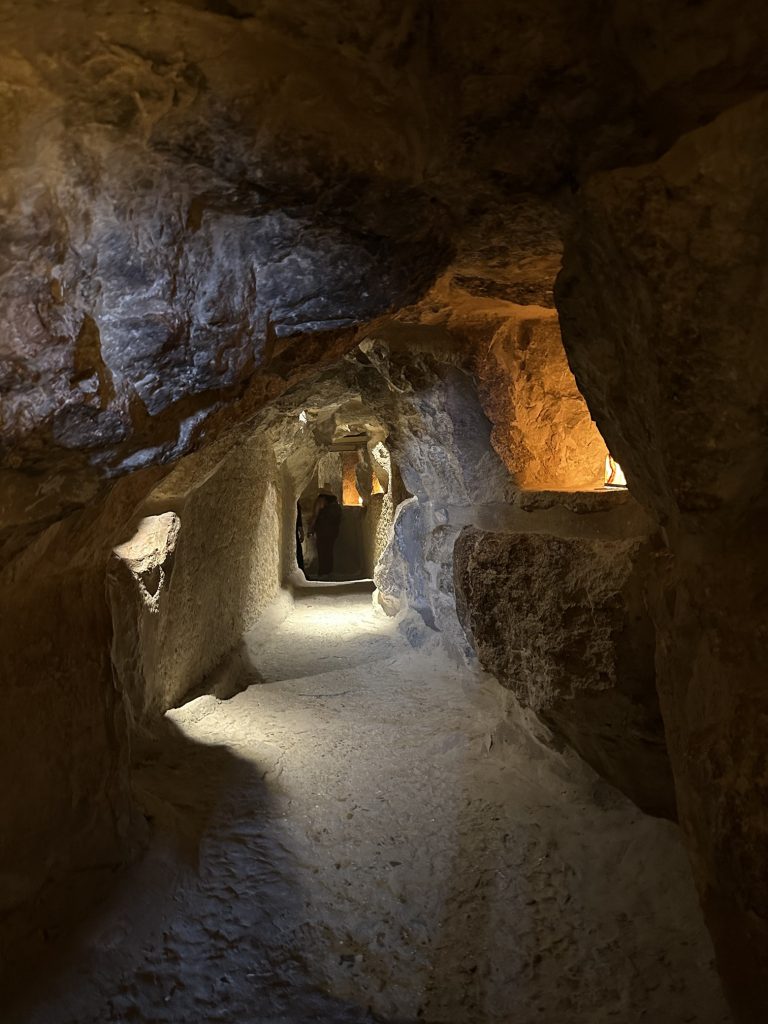
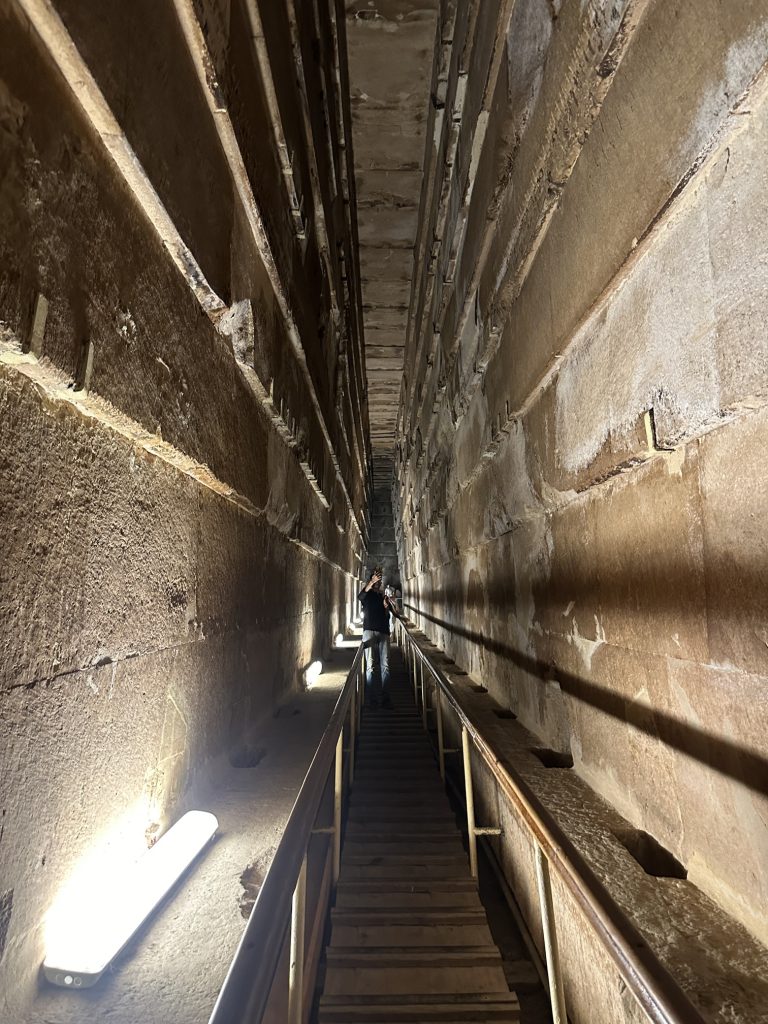
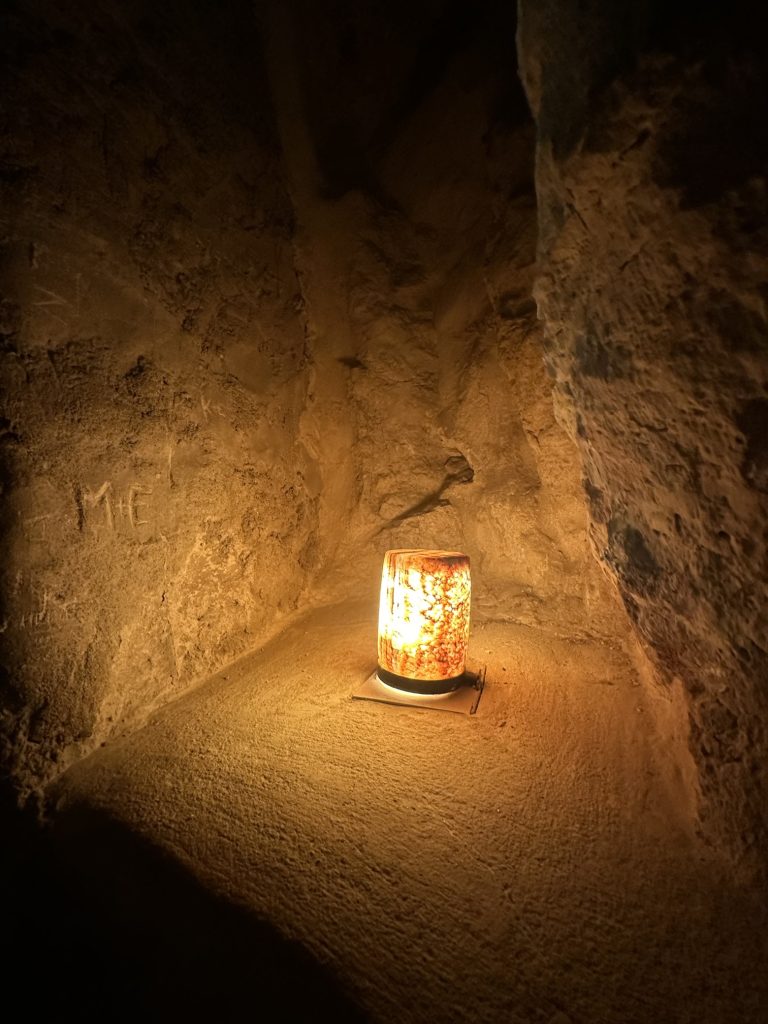
■Giza Pyramid Light Show
The Giza Pyramids have also been enhanced by modern technology through the “Pyramids Sound and Light Show.” Initiated in the 1960s, this show intricately weaves together narration, music, and striking lighting effects to recreate the history and grandeur of the pyramids.
The event takes place in the evenings, with visitors gathered to witness the pyramids illuminated against the night sky, offering a vivid glimpse into ancient Egyptian civilization.
The show combines ancient Egyptian history with modern storytelling techniques, immersing visitors in the cultural significance of the pyramids. It has become a staple for tourists, providing an engaging way to experience the site after sunset.
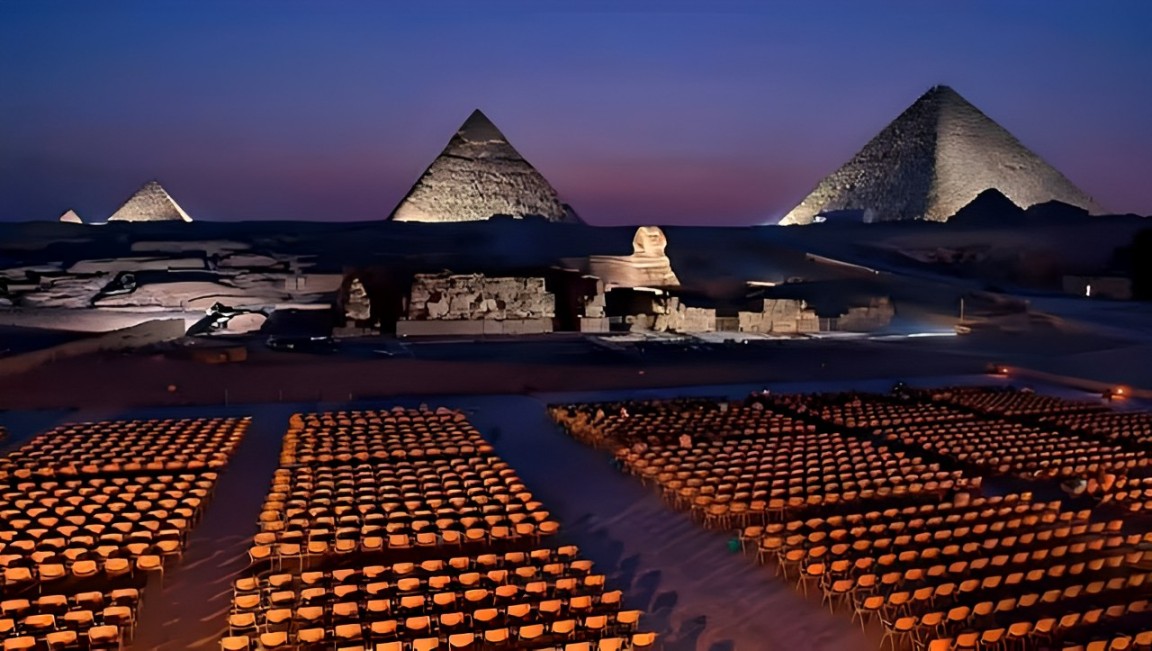
From our survey, it is evident that the lighting fixtures are not installed properly, making them susceptible to damage by the public.
While we understand that the lighting shows occur only about four days a week, there is a need for better installation practices, whether for permanent or temporary setups.
Ensuring that the fixture s are installed correctly will help prevent damage and enhance the overall experience for everyone.
Many visitors praise it for its breathtaking visuals and the aptivating storytelling that brings ancient history to life. The stunning illumination of the pyramids creates an aweinspiring atmosphere, allowing viewers to appreciate these ancient wonders in a new light.
■Interviews
In our exploration of public lighting in Cairo and Giza, we interviewed local residents to understand their perspectives on nighttime illumination in the city and how it could be improved.
From ourinterview with Mohamd Abd Salam Fared, a local resident and the owner of a perfume shop in Cairo, he expressed a preference for warm-colored lighting, which he finds more comfortable for the eyes. He believes that warm lighting complements Egyptian architecture and creates a relaxing and enjoyable atmosphere in the streets at night.
Mohamed Fayed, a Giza native and hotel manager, also shared his thoughts. He feels that the current level of public lighting in Giza is adequate. Like Fared, he prefers warm lighting that is not overly direct, as bright spotlights can create glare.
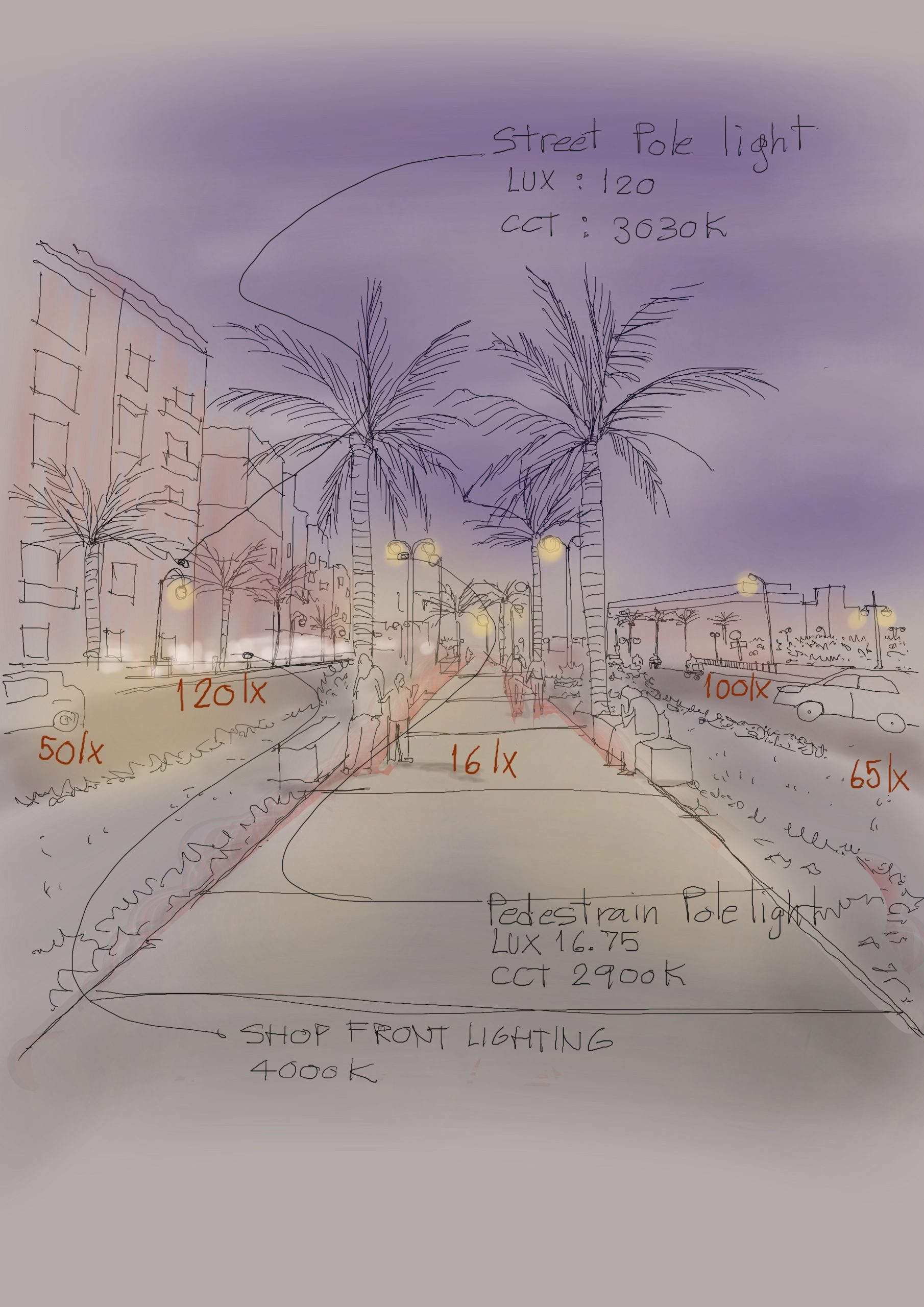
■Conclusion
Overall, our inter views reveal that most residents are satisfied with public lighting, particularly in functional areas, and they favor warm-colored lights. However, there is a desire for more attractive lighting options, especially in tourist areas, as Egypt relies heavily on tourism for its economic stability.
Our survey indicates that Egyptians enjoy public spaces, such as parks and bridges, and appreciate the minimal light pollution that exists.
The focus has been on enhanc ing only necessary lighting in important locations.
That said, maintenance of the existing lighting infrastructure is crucial. Many lights are damaged or poorly maintained, and ensuring that these fixtures remain functional and aesthetically pleasing would significantly enhance the nighttime experience in these cities. By addressing these aspects and involving local communities in the planning and implementation of lighting, we can create a more inviting and enjoyable environment for both residents and visitors.
Visiting Tanteidan in Hida Kamiokamachi
2024.11.15 Noriko Higashi + Hikaru Kimura
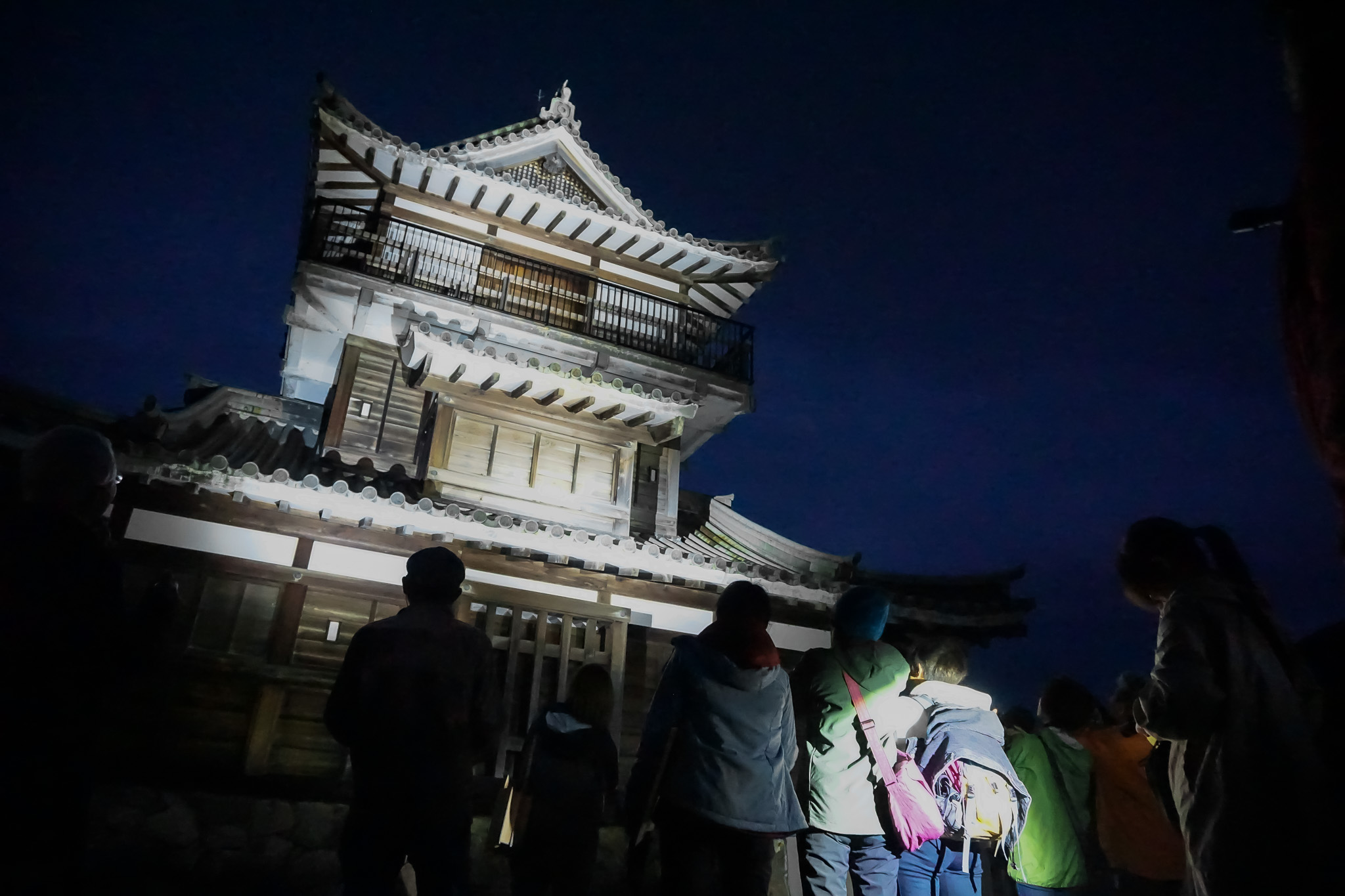
This is the second night walk event, following the workshop held in Hida-Furukawa in August 2023. This time, we ventured to Kamioka-cho, also within Hida City. The centerpiece of this event was an experiment to illuminate Kamioka Castle. We tested various lighting techniques to determine the most effective way to illuminate the castle and enhance the nightscape. Additionally, we walked around the town to observe the existing nighttime environment and discuss our findings.
Before the experiment, our chief, Mr. Mende, provided a background on urban lighting and shared examples of successful lighting redesign, such as those in Nagasaki. After the introductions, we proceeded to Kamioka Castle to conduct the lighting experiment.
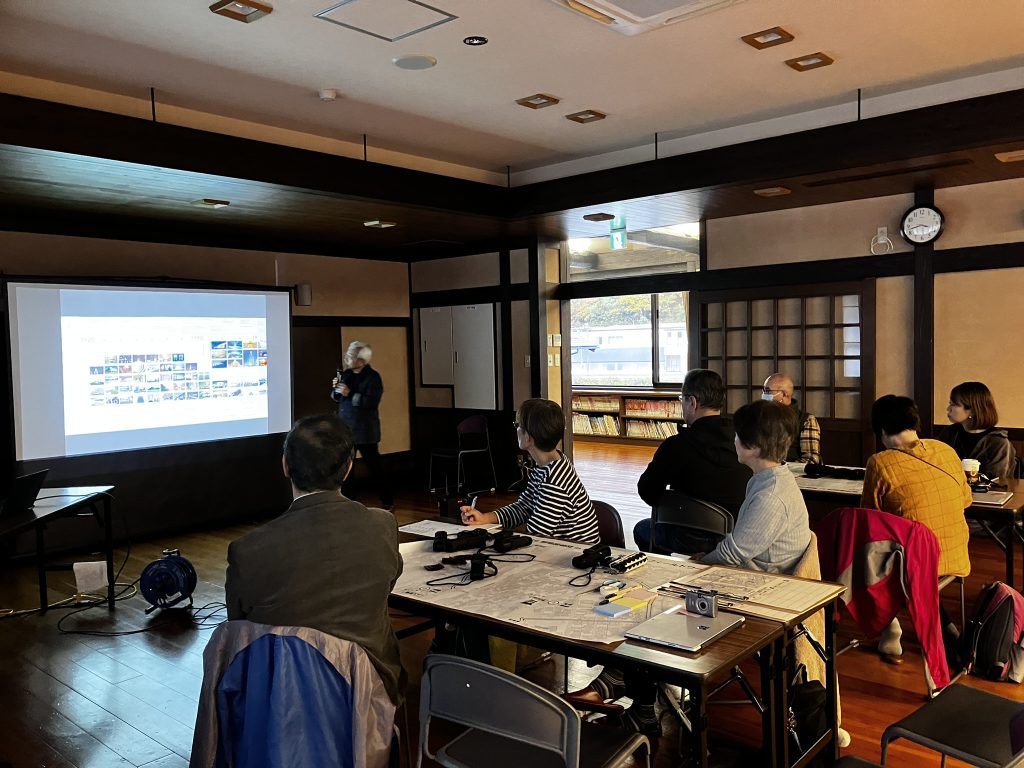
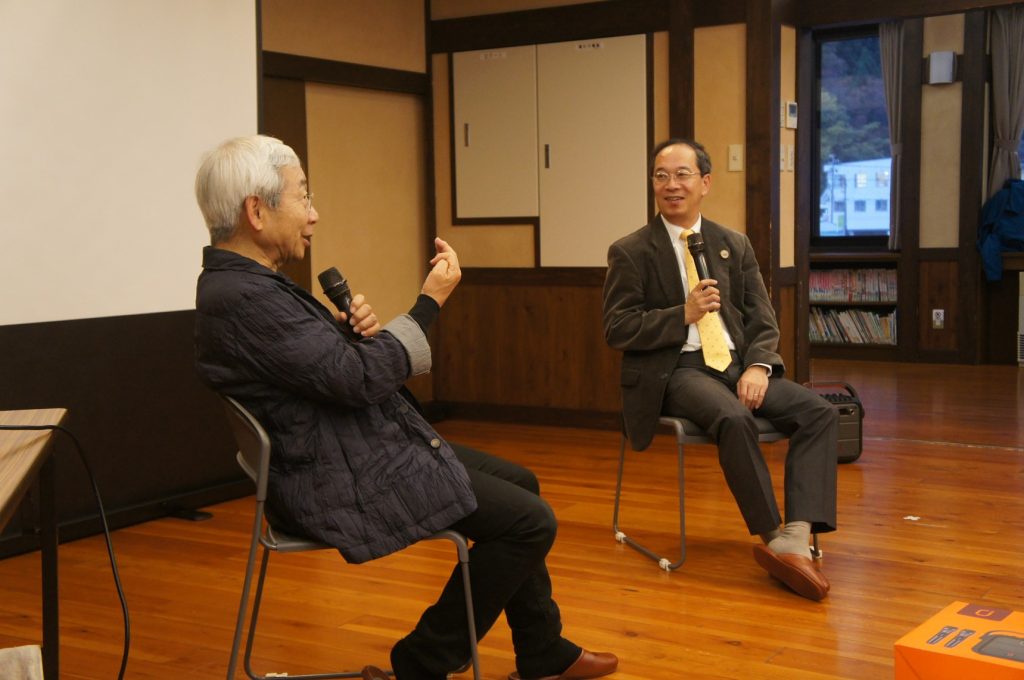
We began by observing the existing lighting. Currently, the castle is illuminated by several 1kW floodlights that were installed quite some time ago. Some of these lights were not functioning. For our experiment, we used high-powered flashlights with three dimming levels and red, blue, yellow, green, and orange color filters. We tested various combinations of colors, brightness levels, and lighting positions to determine the optimal illumination. Participants were amazed at how dramatically the castle’s appearance changed with different lighting setups and shared their preferences. However, when they learned that even using 20 of our 8W flashlights would only consume about 160W of power, they were surprised at how much energy the current lighting system was wasting.
Some participants expressed concerns that illuminating the castle would make the dark night too bright. However, they were relieved to learn that there are ways to dim the lights and prevent excessive light pollution.
During our walk around town, we discovered various lighting issues. For example, some public squares were brightly lit even when there were no people around, while some traditional paths, which we preferred to keep dark, were well-lit. Conversely, there were places that were completely dark and inconspicuous but had the potential to be highlighted as unique features of the town.
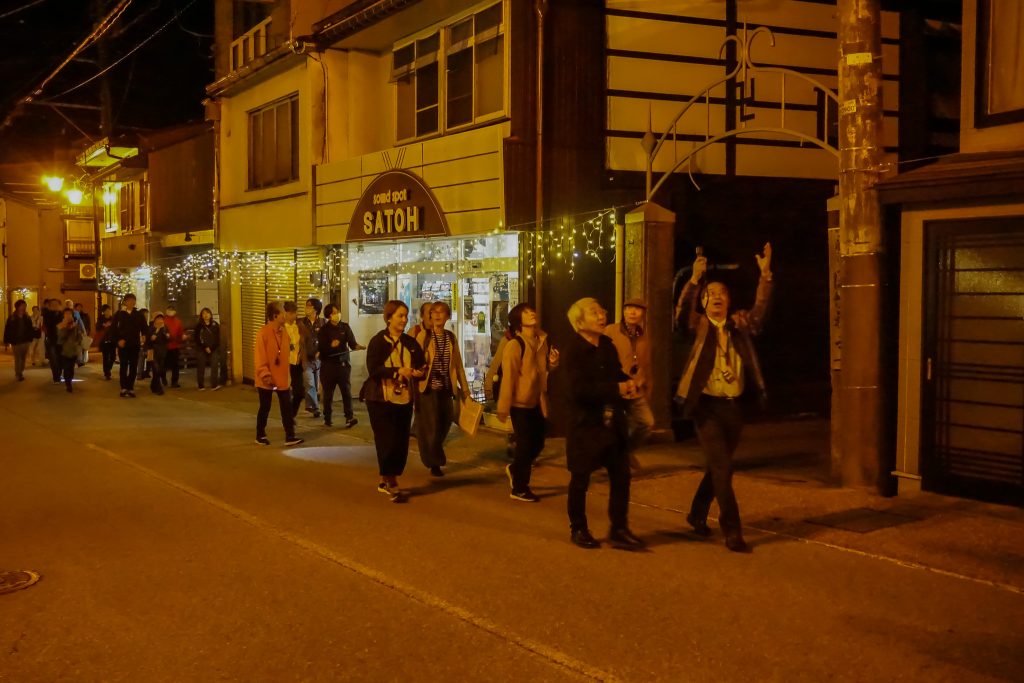
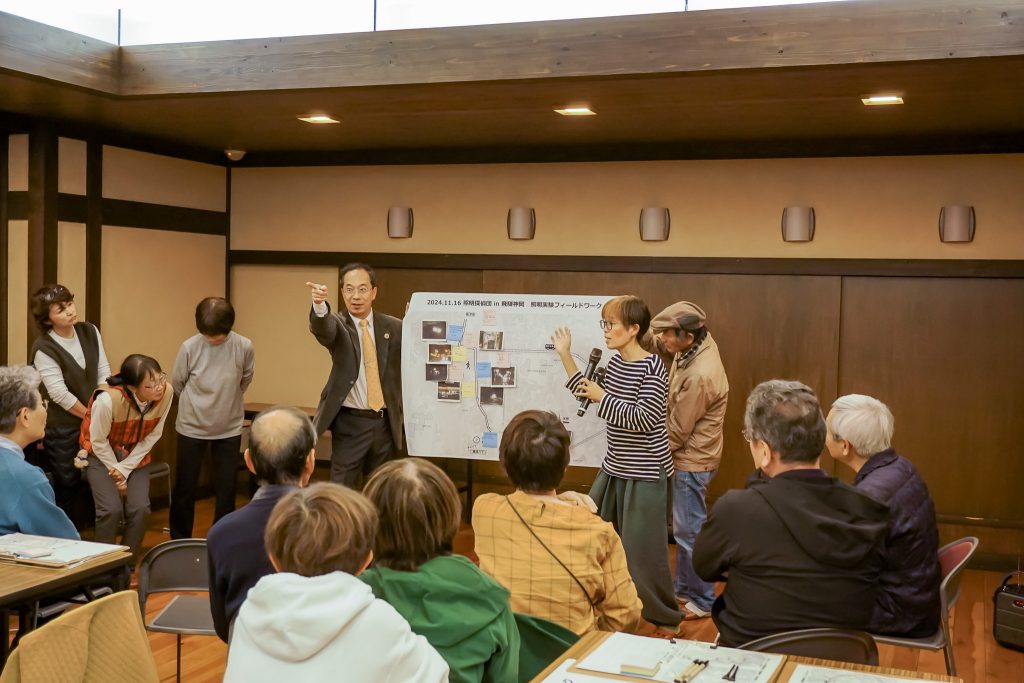
During the group presentations, everyone actively shared their opinions, demonstrating a strong passion for improving the town. It seems that many participants gained new perspectives on issues they had previously overlooked after taking another look at the town at night.
Some of the issues raised included the lighting of Kamioka Castle, glaring streetlights, dark and scary places, and excessively bright lighting. On the other hand, participants also appreciated the retro-style signage and the creative illuminations installed by local shops.
I hope this workshop will contribute to improving the nightscape of Kamioka-cho. (Noriko Higashi)
Night Walk Vol.075: Kagurazaka
Investigating the lighting of Kagurazaka known for its charming blend of Japanese and European cultures, reflected in its history, culture, and dishes.
2024.11.18 Amane Kotani + Akira Tawarada + Noriko Higashi
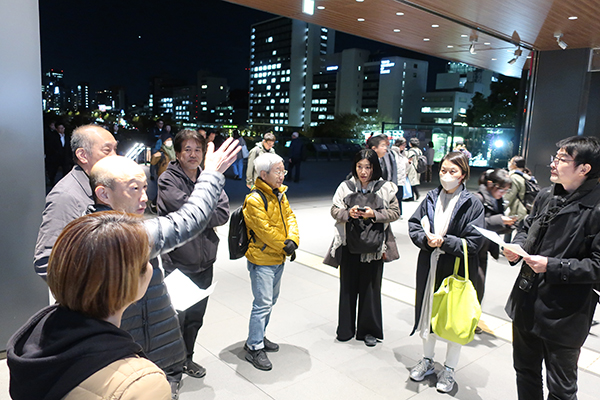
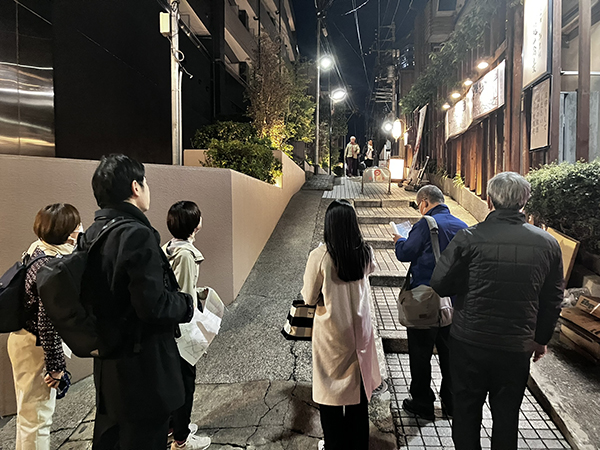
Our final city walk of 2024 took us to Tokyo’s Kagurazaka. This popular area is lined with small alleys filled with trendy cafes, restaurants, and izakayas. Tucked away behind the distinctive cobblestone streets are high-end ryotei (traditional Japanese restaurants) and French restaurants without signs, creating a hidden gem atmosphere. It’s a perfect neighborhood for strolling, but what about its lighting? We divided into two groups of eight and set out to explore.
Kagurazaka is a town with a hidden charm, blending the atmosphere of Edo with French culture. The cobblestone streets are lined with historic buildings and unique shops, creating a nostalgic atmosphere. The area is particularly known for its dining options, with hidden restaurants and cafes offering delicious food and wine, making it popular with tourists. We explored the nighttime scenery of this charming town.
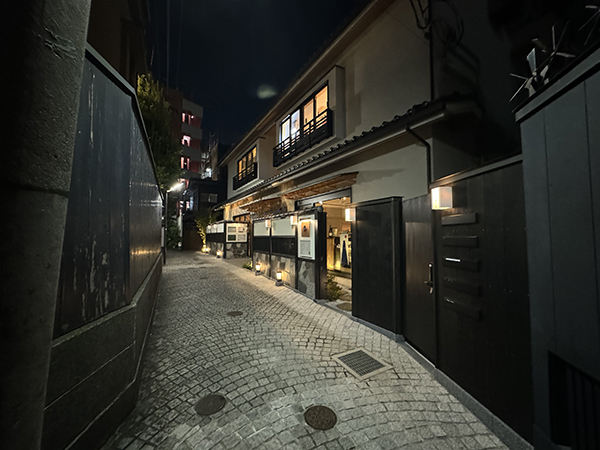
■ Team 1: Kagurazaka Alleyway Exploration Route
Team 1, under the theme of “Kagurazaka Alleyway Exploration Course,” started from Iidabashi Station and explored various alleys. We were deeply impressed by the entire neighborhood’s high level of interest in lighting. There was a wide variety of lighting, such as illuminating shop signs while ensuring the safety of pedestrians and installing footlights on shop walls.
As soon as we started our walk, we came across the illuminated sign of a real estate agency and multiple shop advertisements. We couldn’t help but feel a bit disheartened, thinking, “Is this the entrance to Kagurazaka?” After walking a short distance down the main street and turning into an alley on the right, we encountered a foreign-feeling staircase. We all agreed that it was a lovely alley, but our moment of appreciation was short-lived when someone pointed out that the bright streetlights were ruining the atmosphere, even though the wall-mounted lights illuminating the shops provided sufficient brightness. In Suiseki Yokocho, we discovered something amusing: a gas lamp with a live flame next to a “Beware of Fire” flag. It was a clever touch and highly praised.
In Kakurenbo Yokocho, we found a fun wine-shaped standing lamp, an impressive window that looked like a painting due to the leaking indoor light, a restaurant using neon lights as streetlights, and shops with stylishly illuminated stairs. It was a delightful alley.
After leaving the pleasant alley, we were stunned to see a blue glow on the road. It turned out to be the light from an advertising monitor. The sudden appearance of the video image in the midst of Kagurazaka’s charming atmosphere illuminated the surroundings in a dazzling way, like a vicious criminal.
As we walked along the Kamakura Kodo Road towards Akagi Shrine, we passed an apartment building with its own streetlights attached to their façade, leading to a discussion about whether this could be a model for street lighting.
Upon arriving at the shrine, we were moved by the small lights of the lanterns, impressed by the beautiful shadows, and surprised by the reflective glass of the shrine. It was an interesting walk to the very end.
Our walk through Kagurazaka was filled with constantly changing scenery, making us stop and chat frequently. Personally, I had always imagined alleys as dark and eerie places with something lurking in the depths. However, in Kagurazaka, the lighting wasn’t wasteful, overly bright kind used to attract customers to shops. Instead, the lighting was designed to ensure safety while walking and to enhance the atmosphere of the town, demonstrating the result of creative thinking. (Amane Kotani)
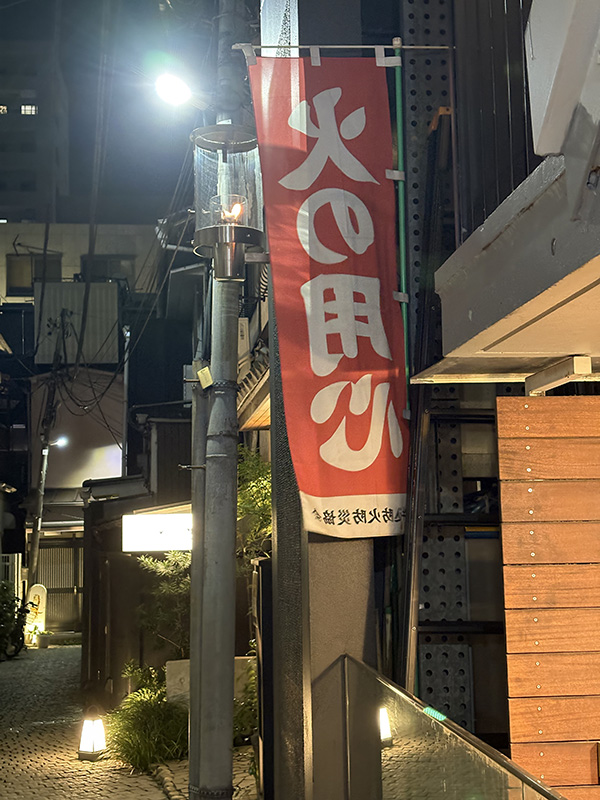
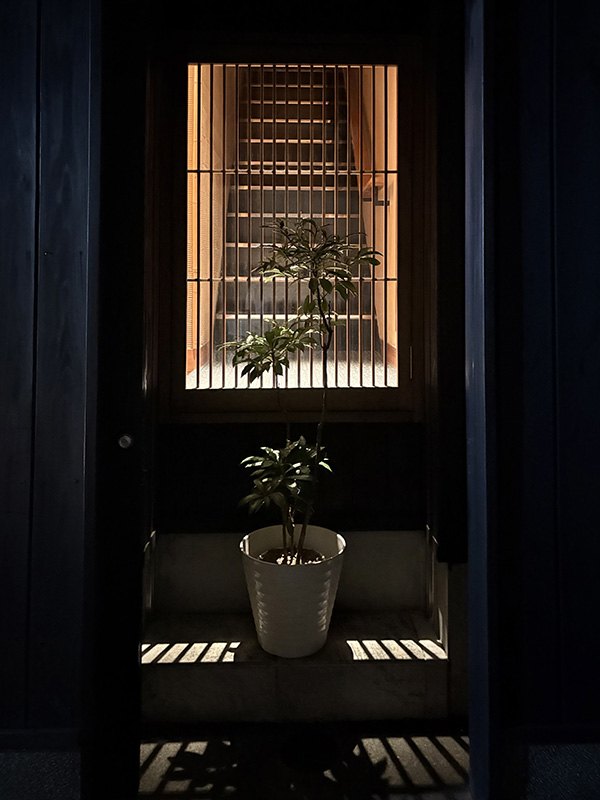
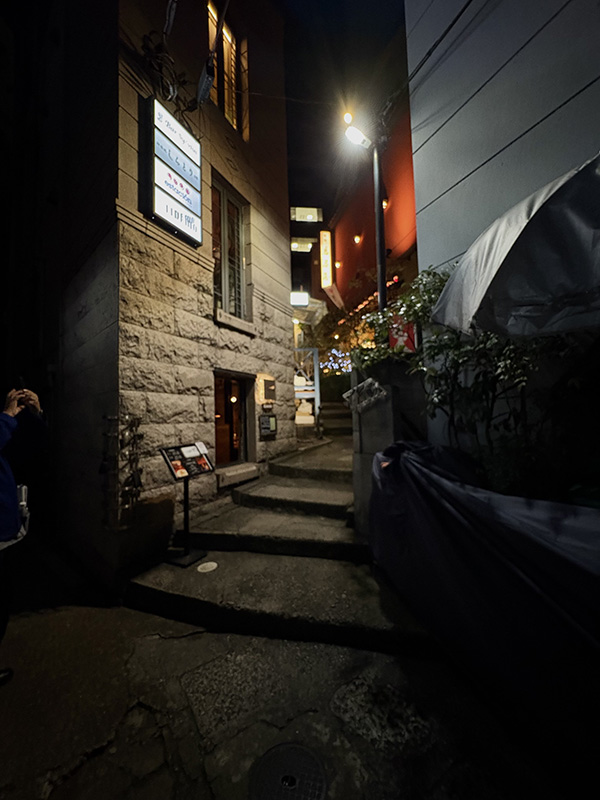
■ Team 2:Kagurazaka Alley & Shop Street Route
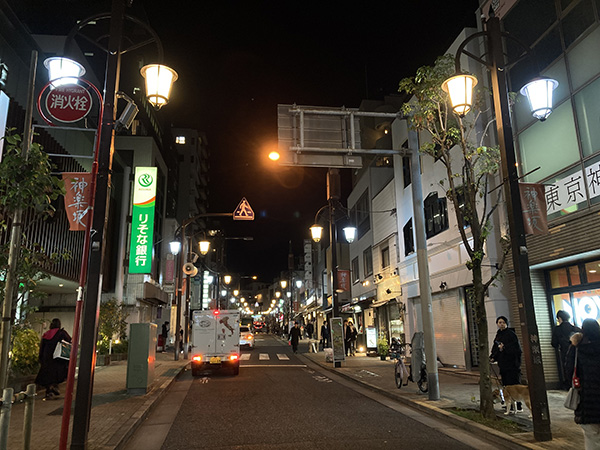
Our team explored a course that covered the bustling main street, quiet alleys, and even shrines and temples. From the eastern end of the slope (near JR Iidabashi Station) to the western end (near Tokyo Metro Tozai Line Kagurazaka Station), the main street is lined with a variety of shops, restaurants, and cafes. The warm light spilling out from these establishments gently invites passersby. However, when we looked up, we noticed some building signage that seemed to lack consideration for lighting. The fact that there were dedicated streetlight poles indicated that overhead wires and poles had been buried underground, but we questioned why both cool white and warm white lights were being used simultaneously. In a later interview with a local business association, we were told, “We aimed to create a calm atmosphere for the road while maintaining a clean impression on the sidewalk.”
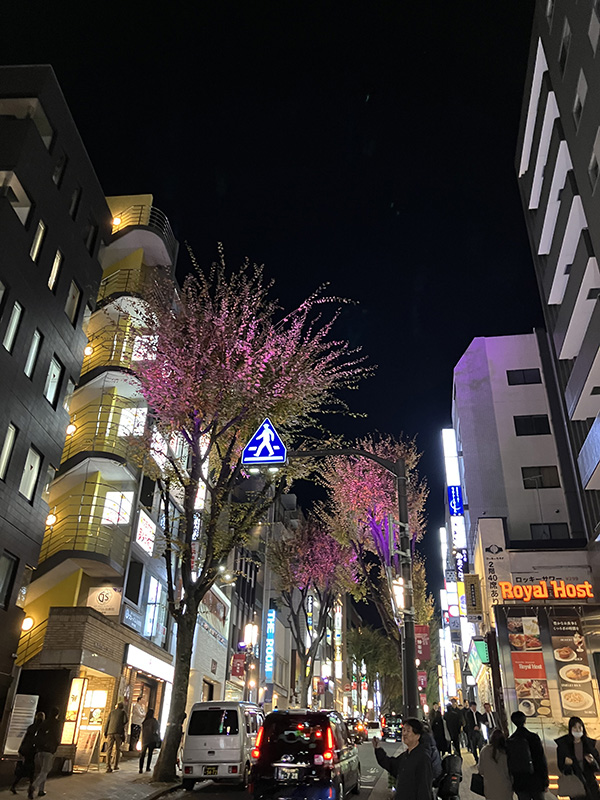
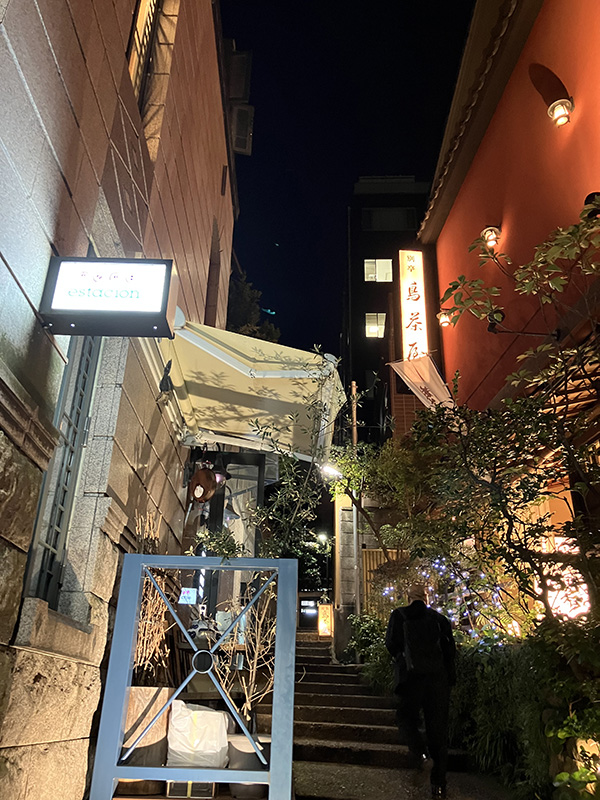
Regarding the illumination of the zelkova trees, there was a wide range of opinions among the members regarding its basic necessity and color selection. In the popular alleys, we were impressed by the warm atmosphere created by the traditional-style lanterns placed on the cobblestones and the subtle use of 2000K flickering lights at the entrances of ryotei (traditional Japanese restaurants) and private homes. However, we also noticed instances of high-luminosity, high-color temperature security lights, which highlighted the challenges of overall lighting management.
It was a very good decision to extend our walk to Akagi Shrine. As soon as we passed through the torii gate, it became much darker, but the gentle lights of the lanterns and paper lanterns successfully dispelled any fear.
Kagurazaka is a charming town that I would love to visit again. (Akira Tawarada)
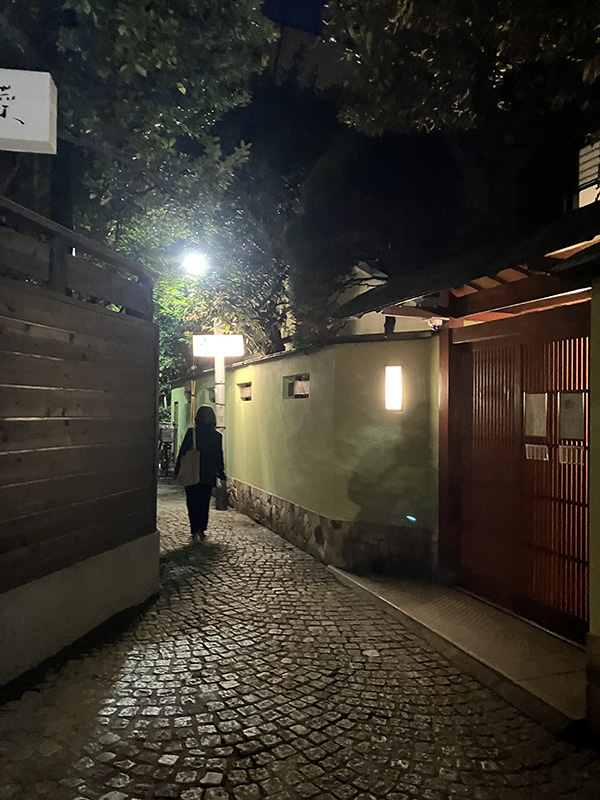
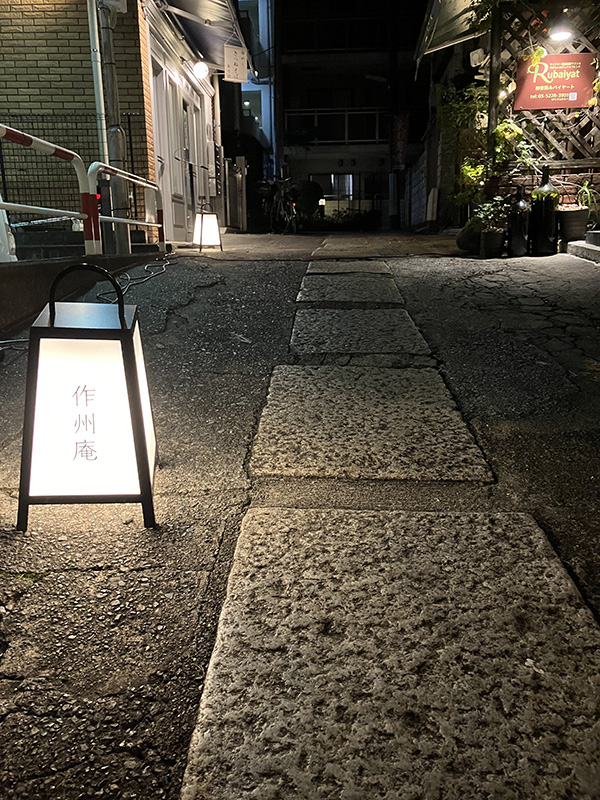
■Review Session
After our walk, we held a wrap-up session at a restaurant with drink and food. While enjoying our meal, we selected three photos each of lighting heroes and villains from the photos taken by one of the group members. Finally, each team presented their findings. Because Kagurazaka has such distinct characteristics, there wasn’t much disagreement, and we were able to quickly decide on our heroes and villains. With explanations from people who knew Kagurazaka well, we heard many interesting stories. Although there were some glaring streetlights, signs, and liquid crystal displays that didn’t fit the atmosphere of the town, everyone seemed to enjoy the walk through Kagurazaka, with its charming alleys that offered a different atmosphere around every corner. We will report more details at the annual gathering party on January 16th, so please join us if you’re interested! (Noriko Higashi)





